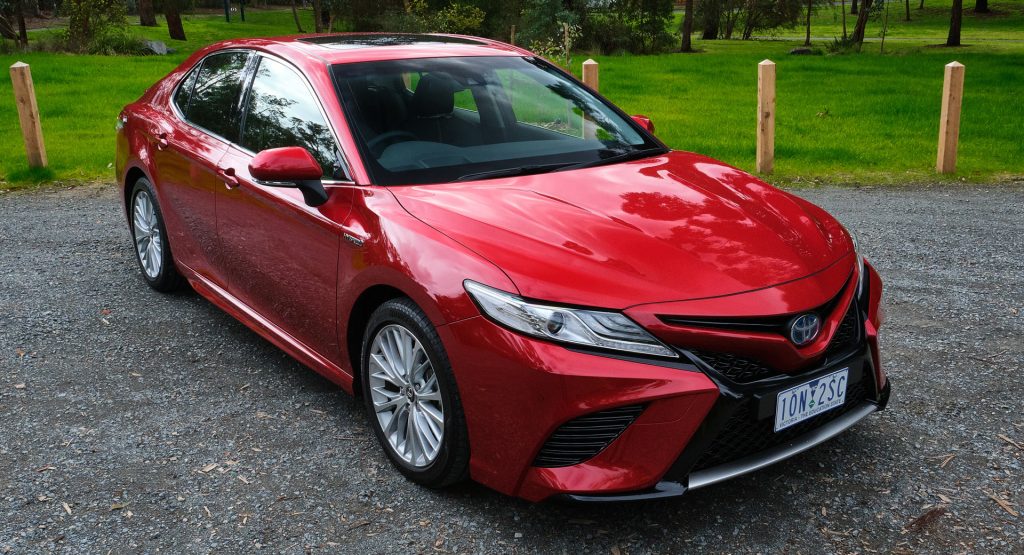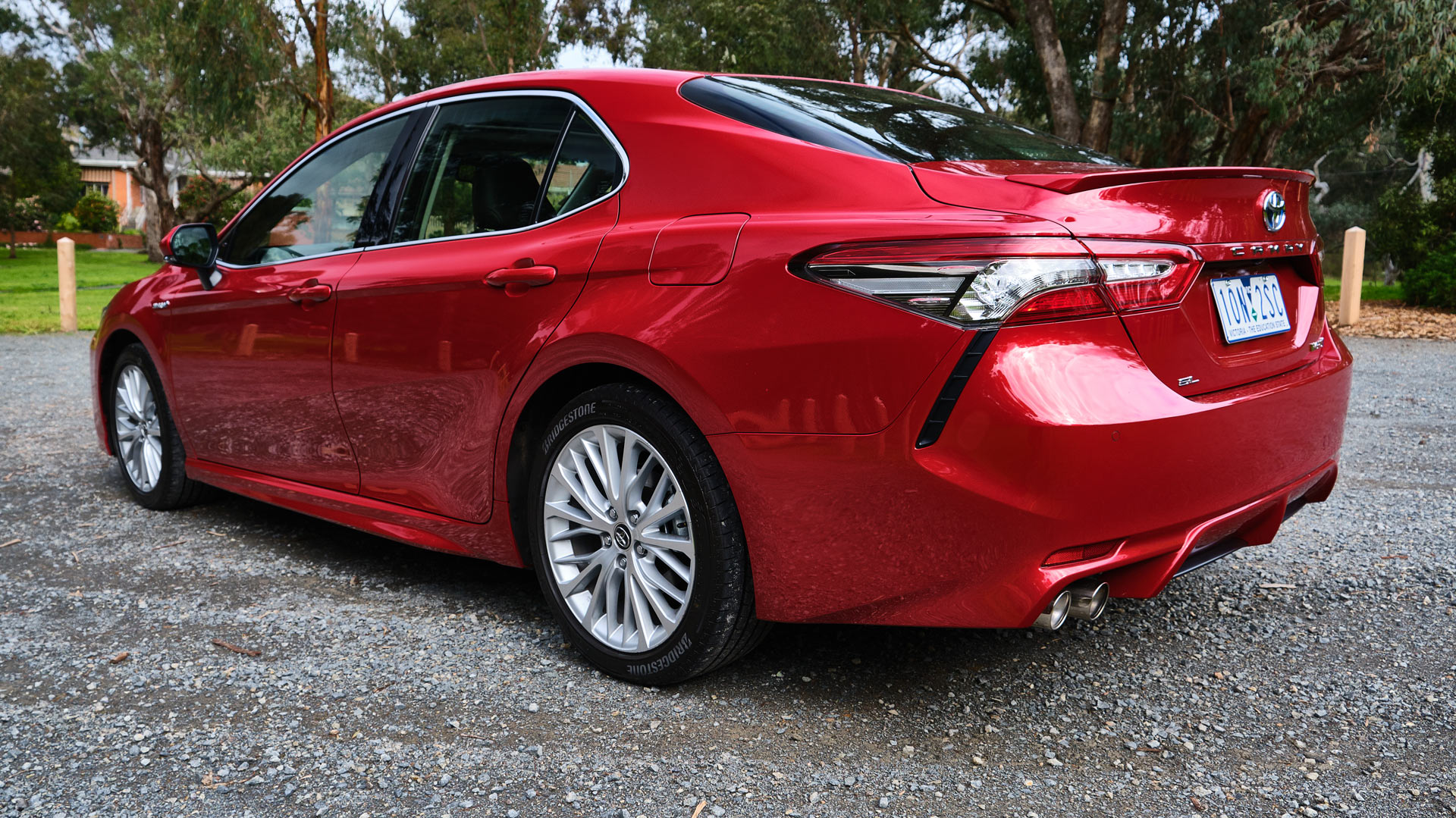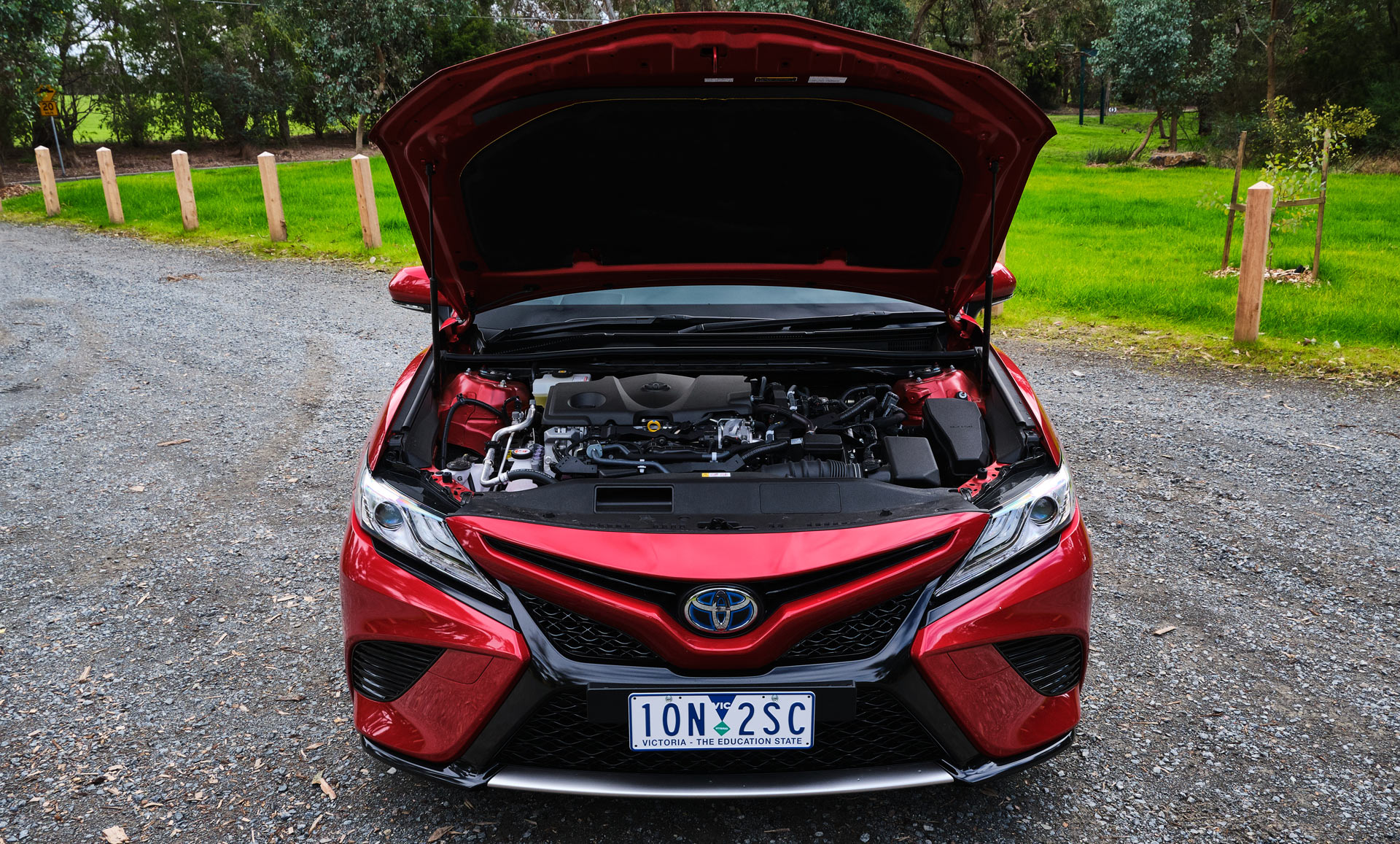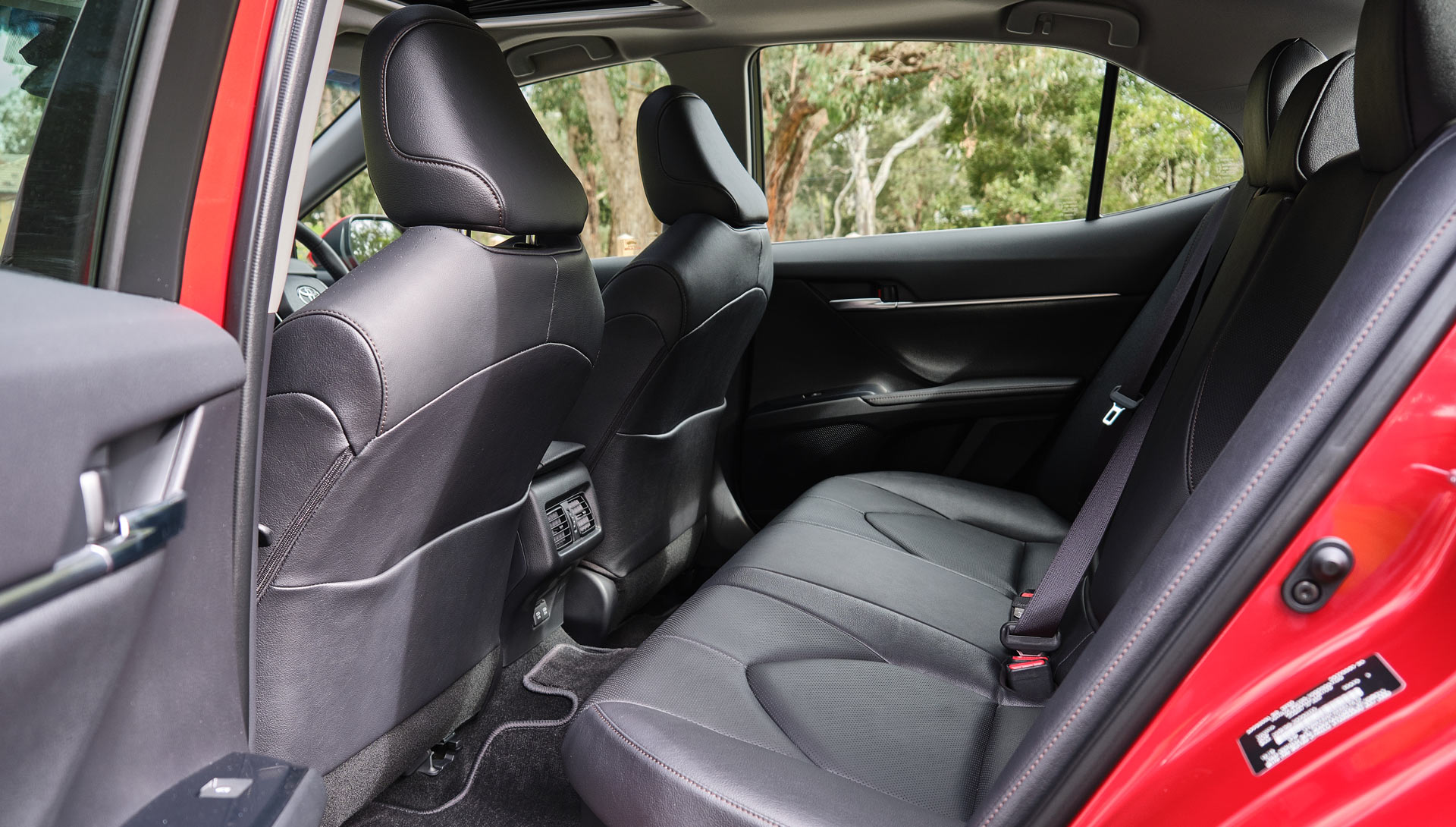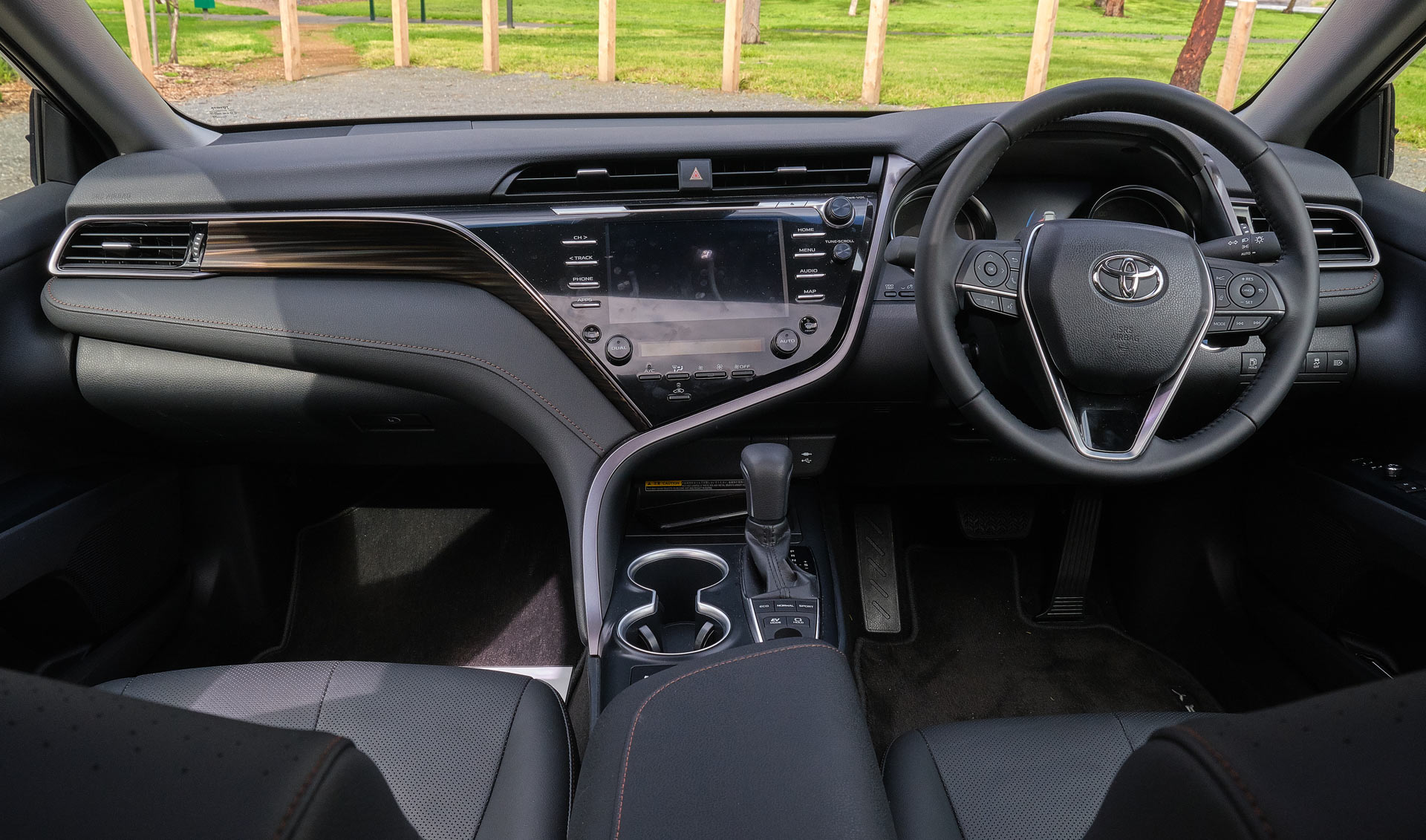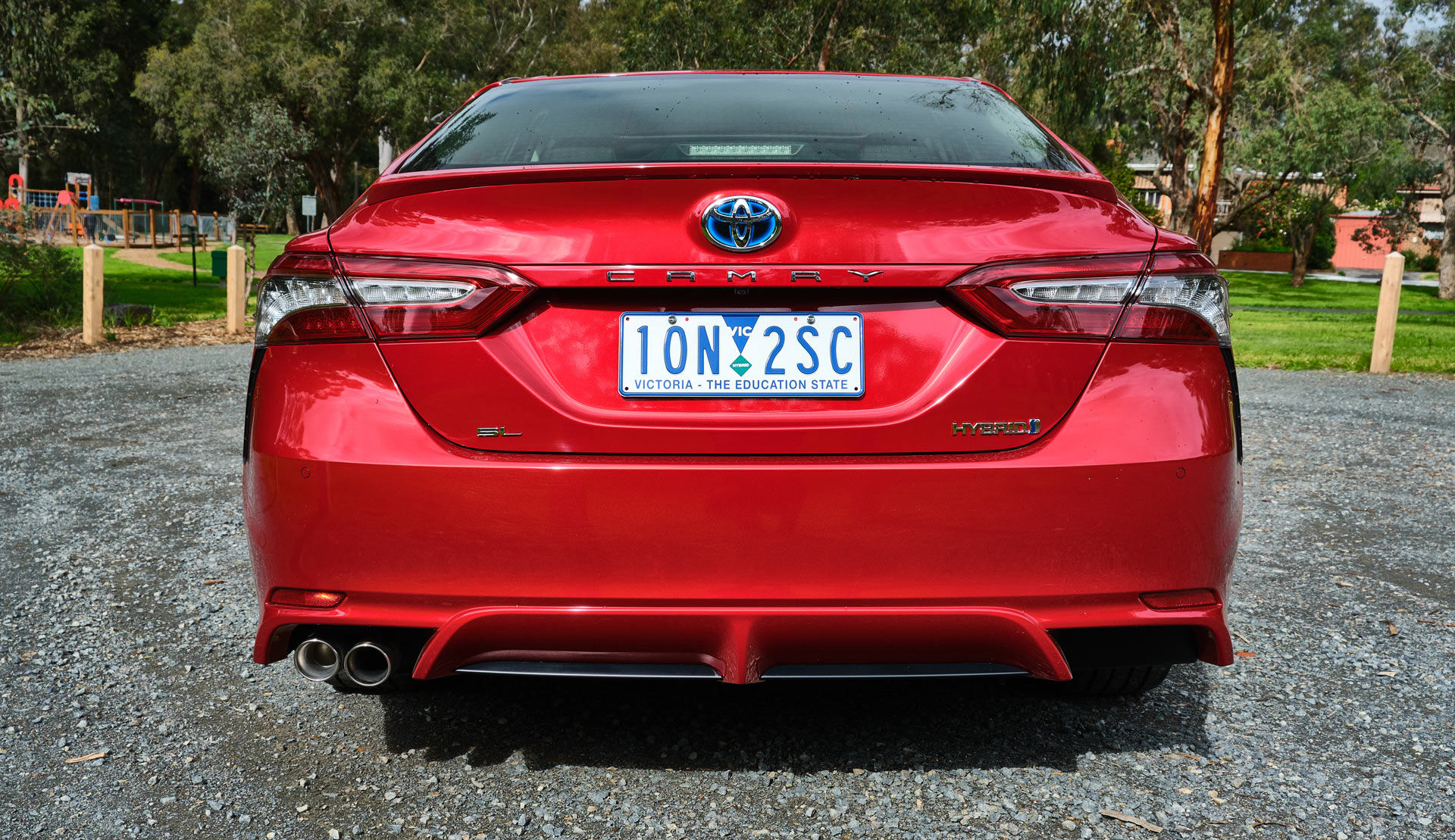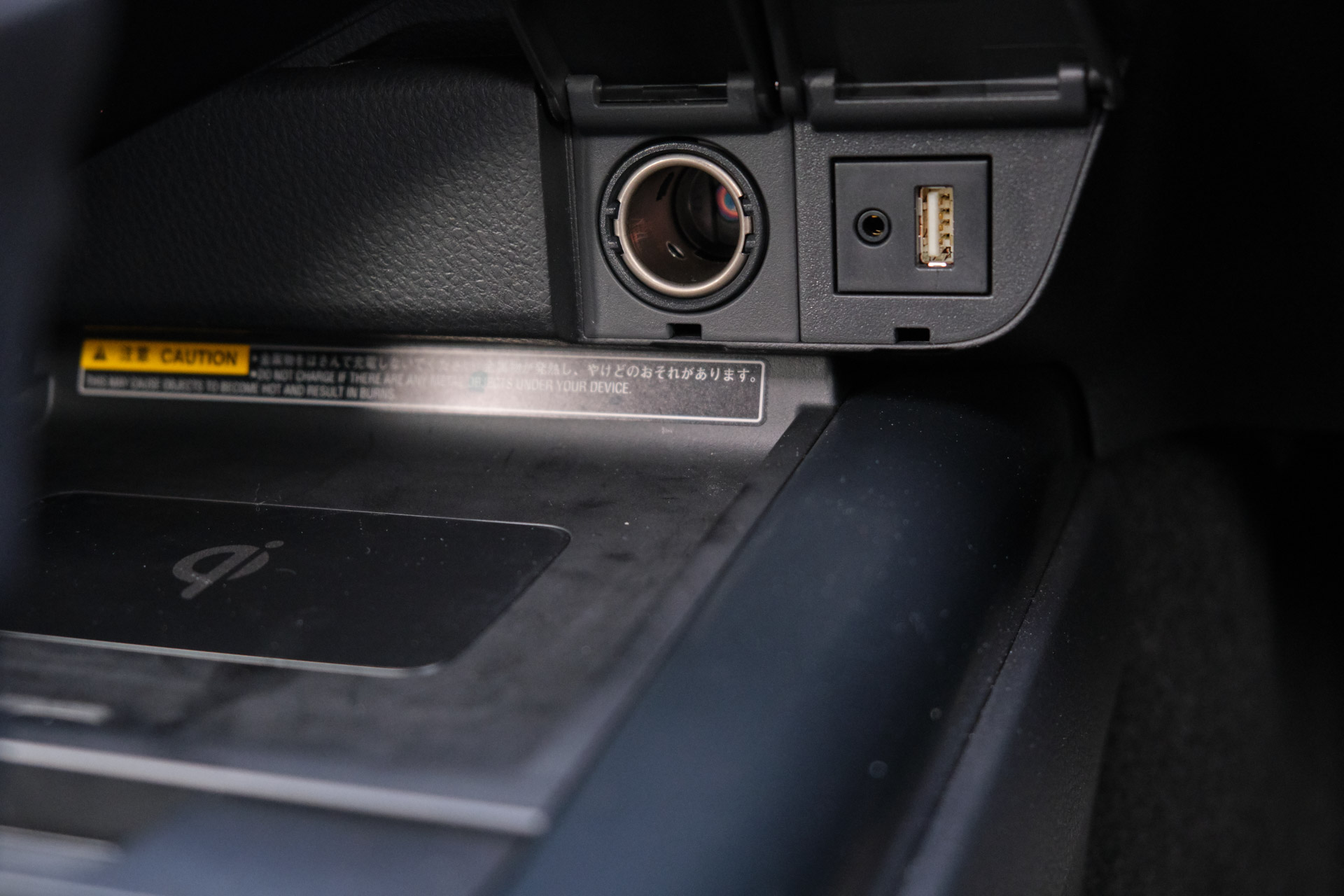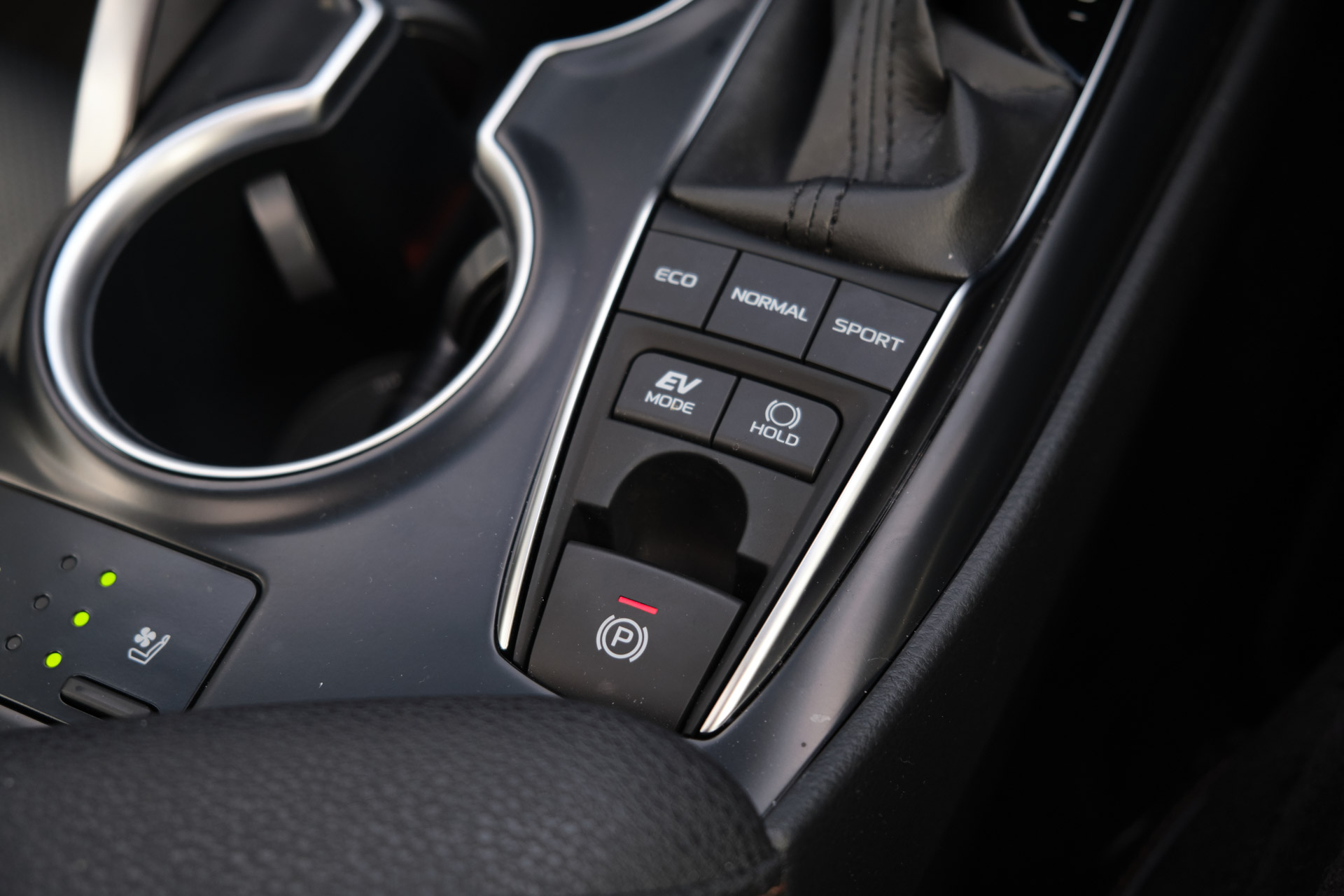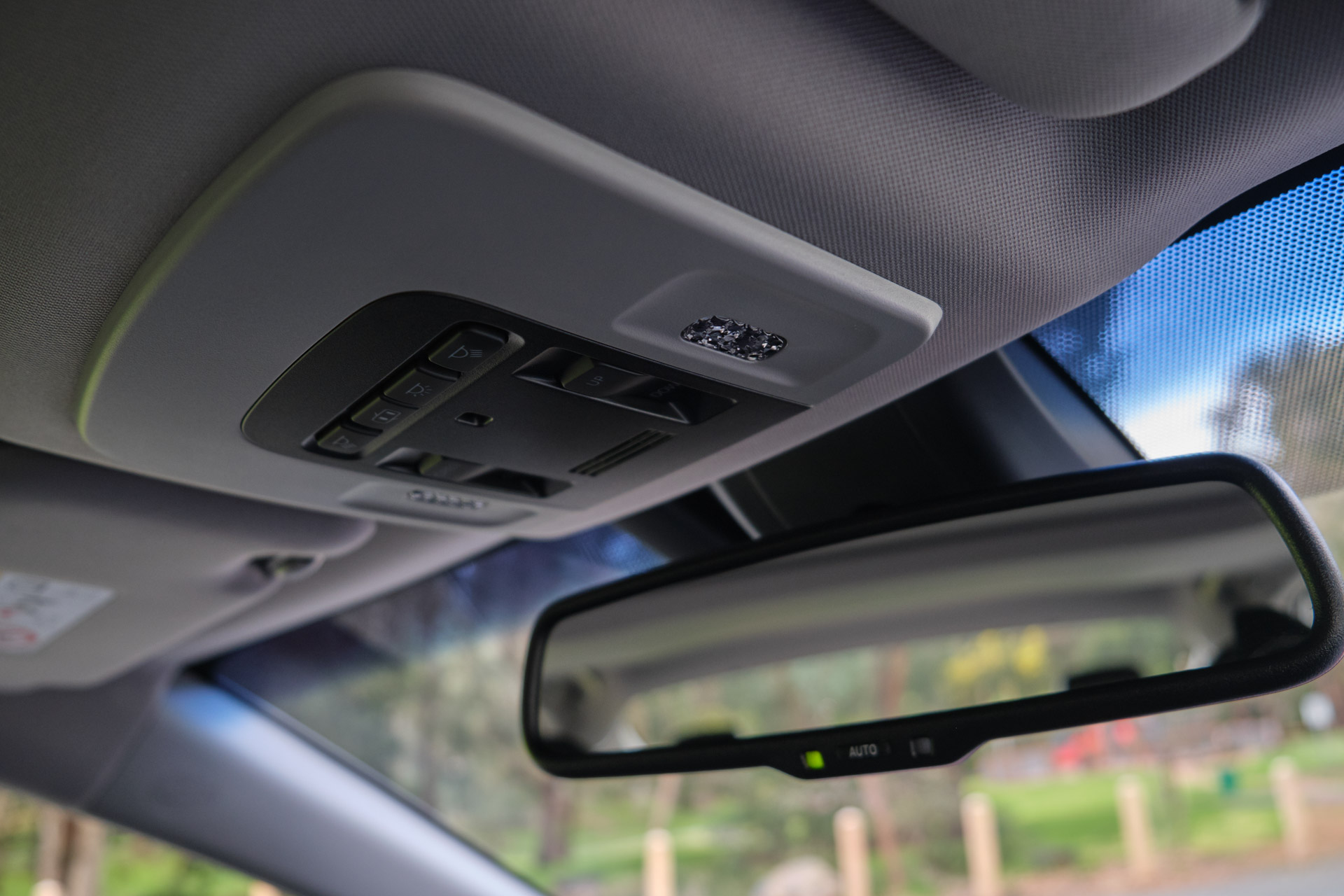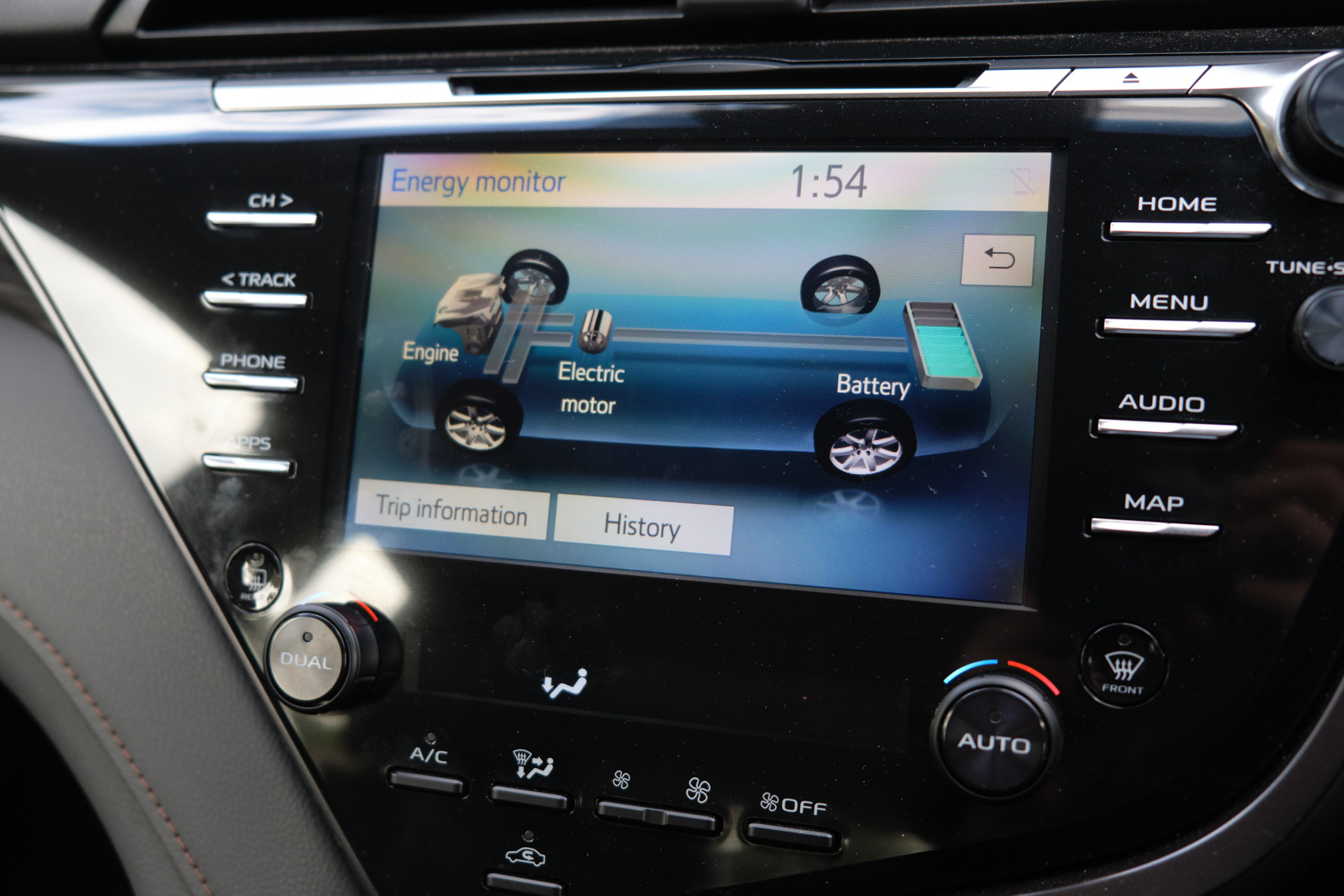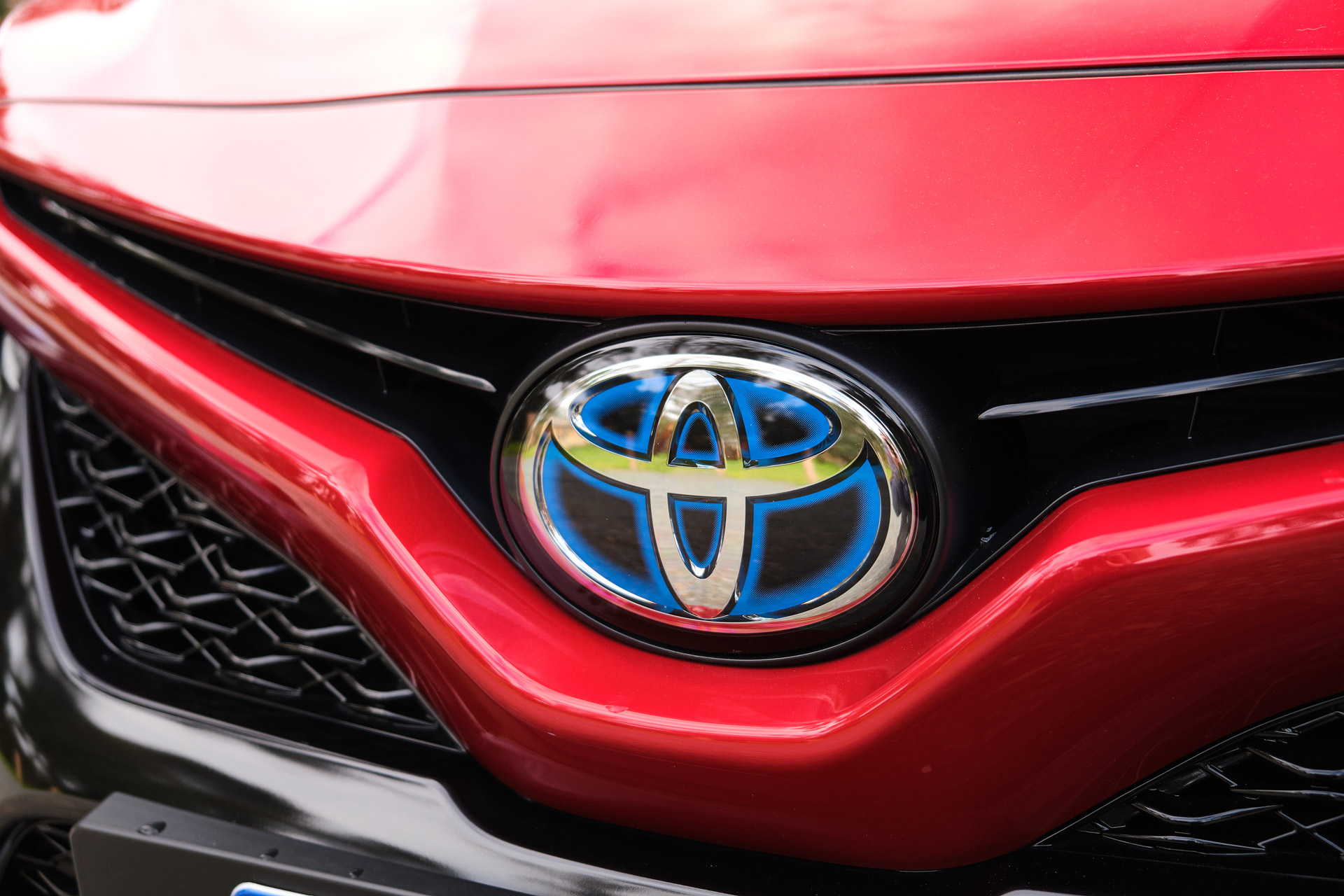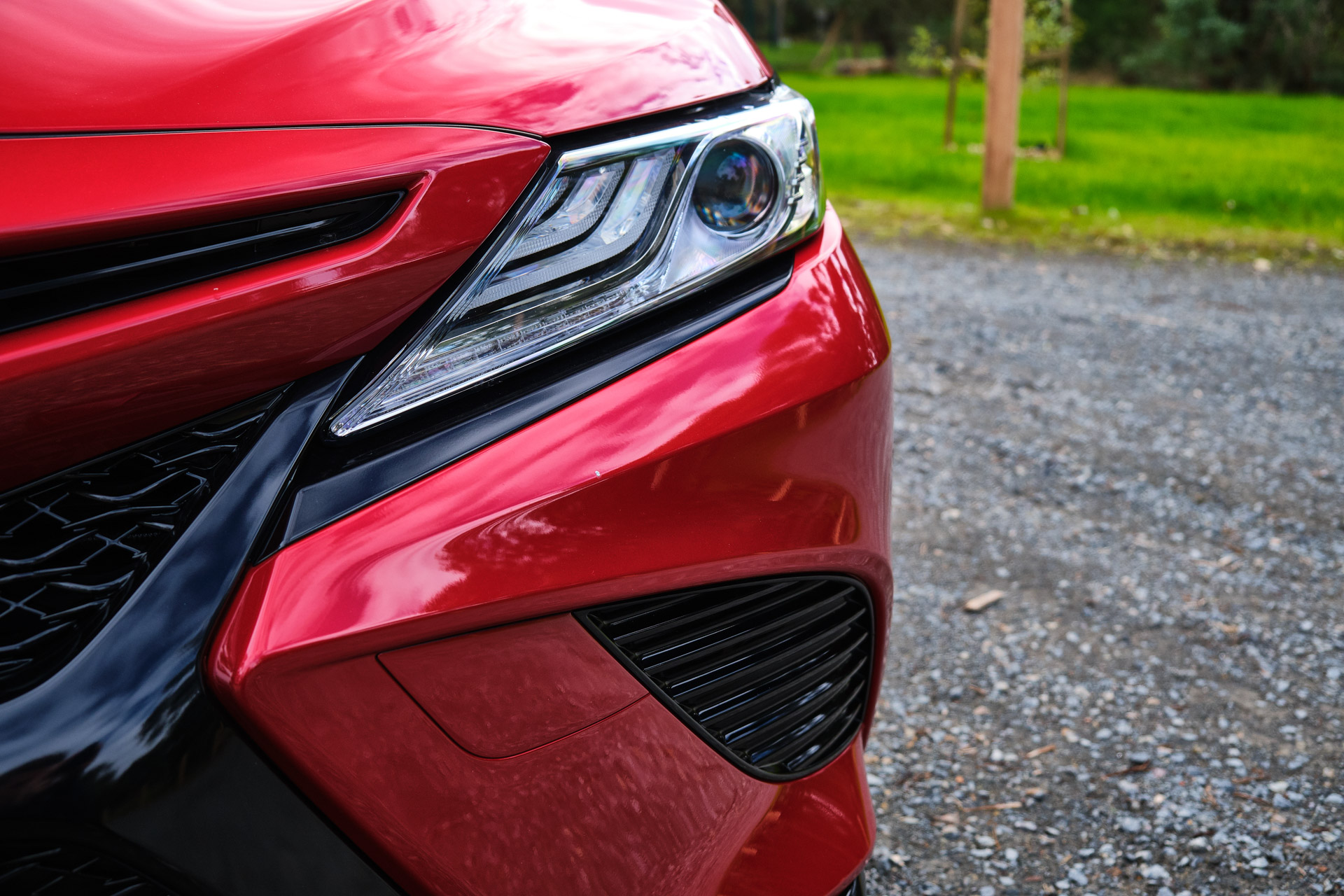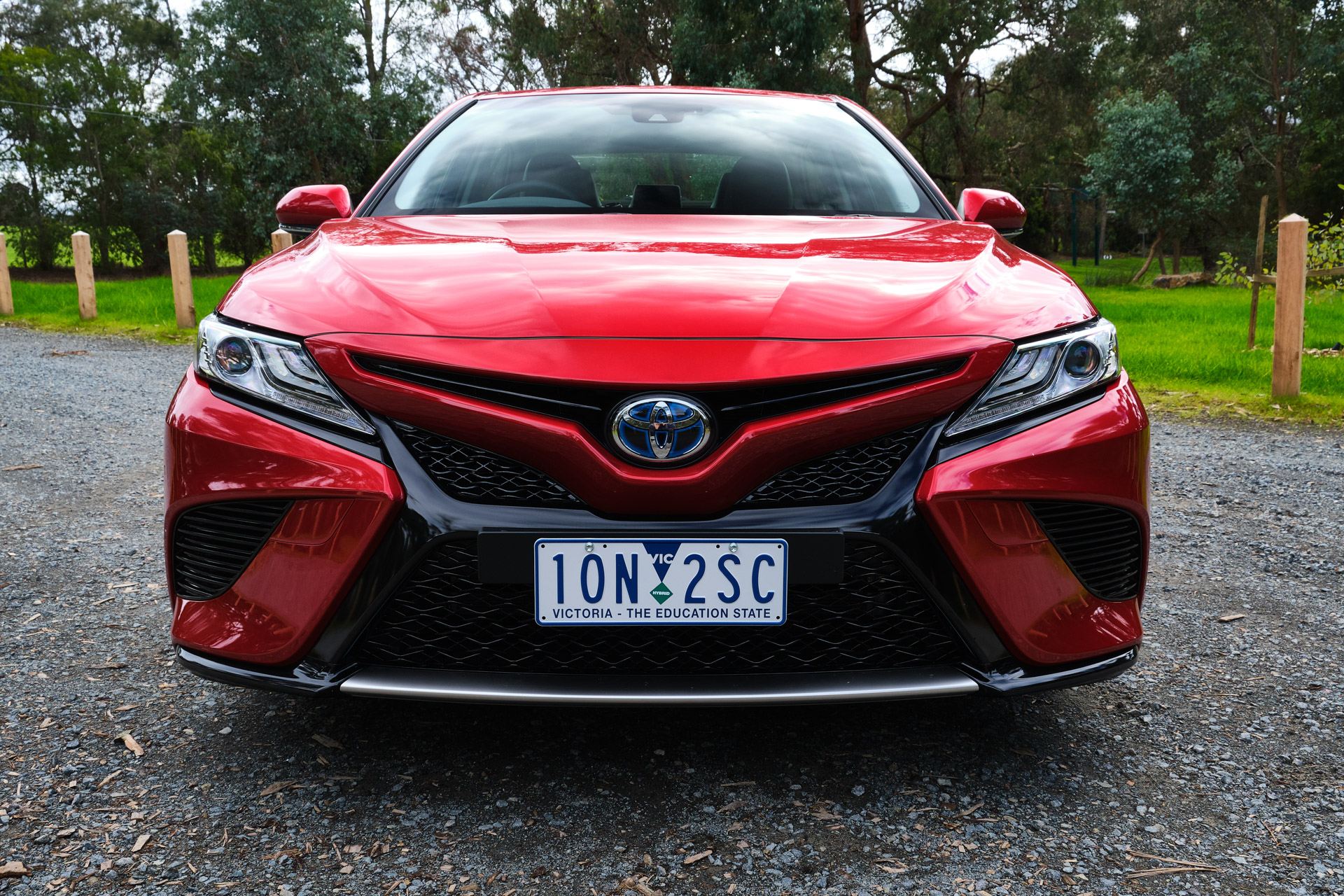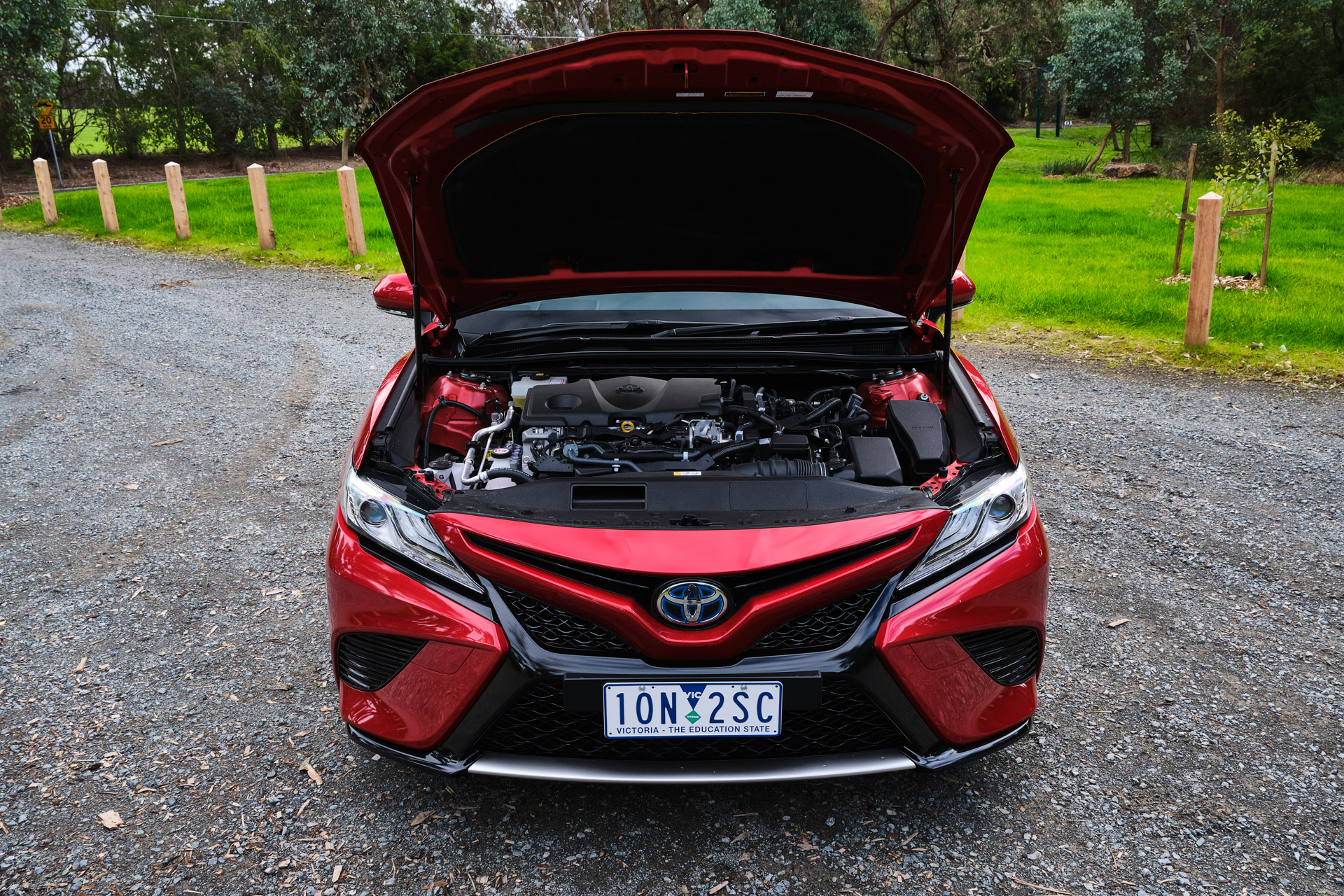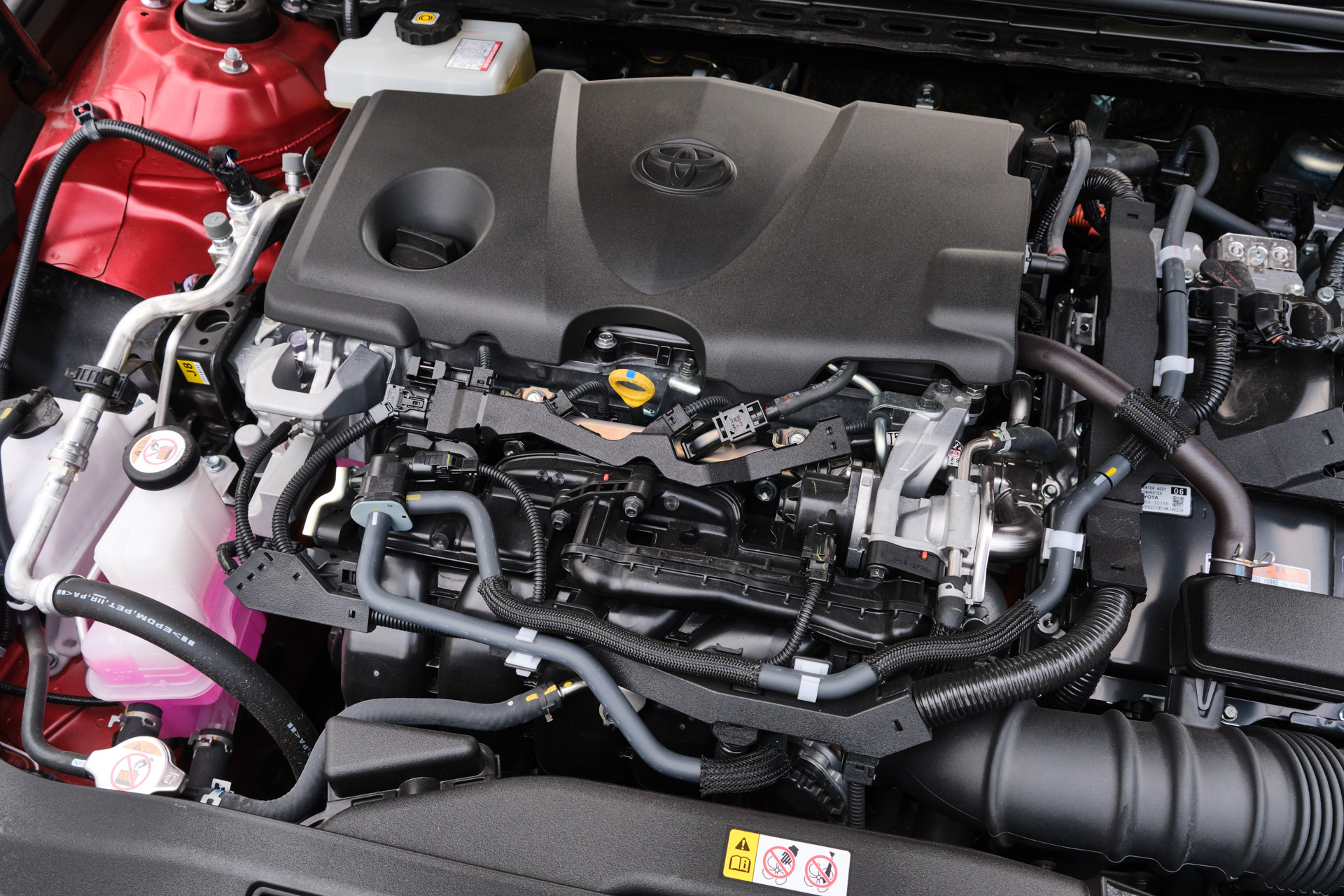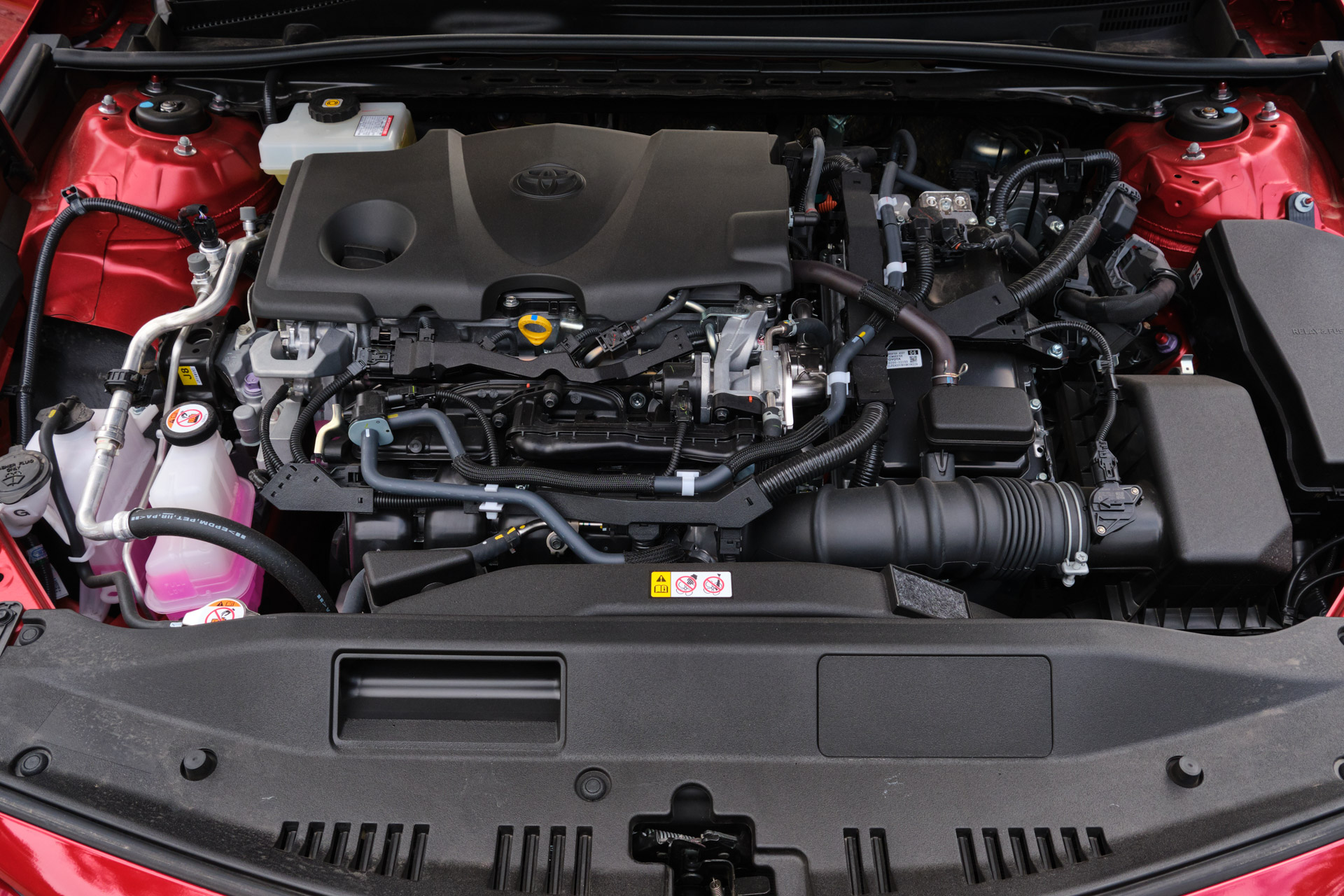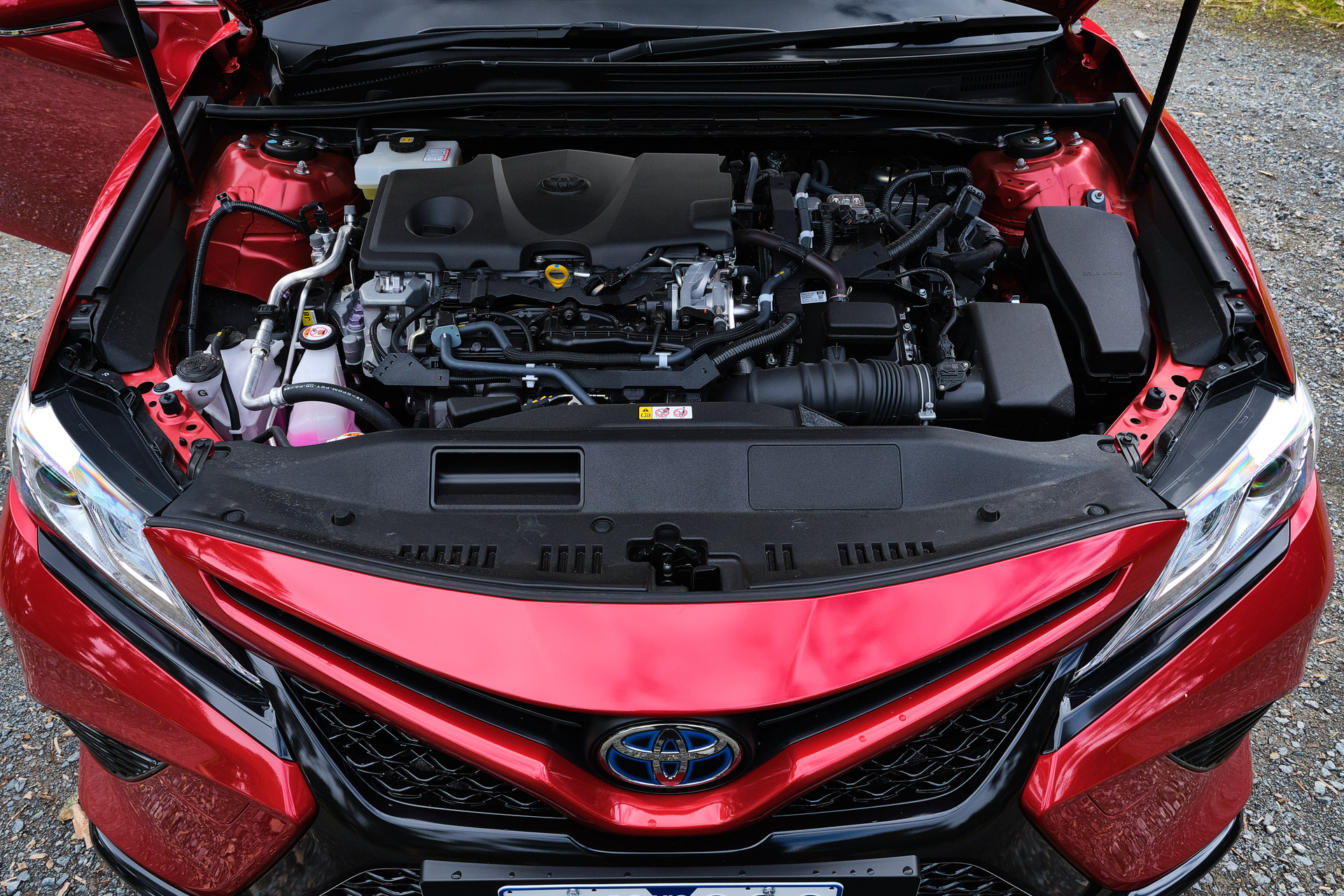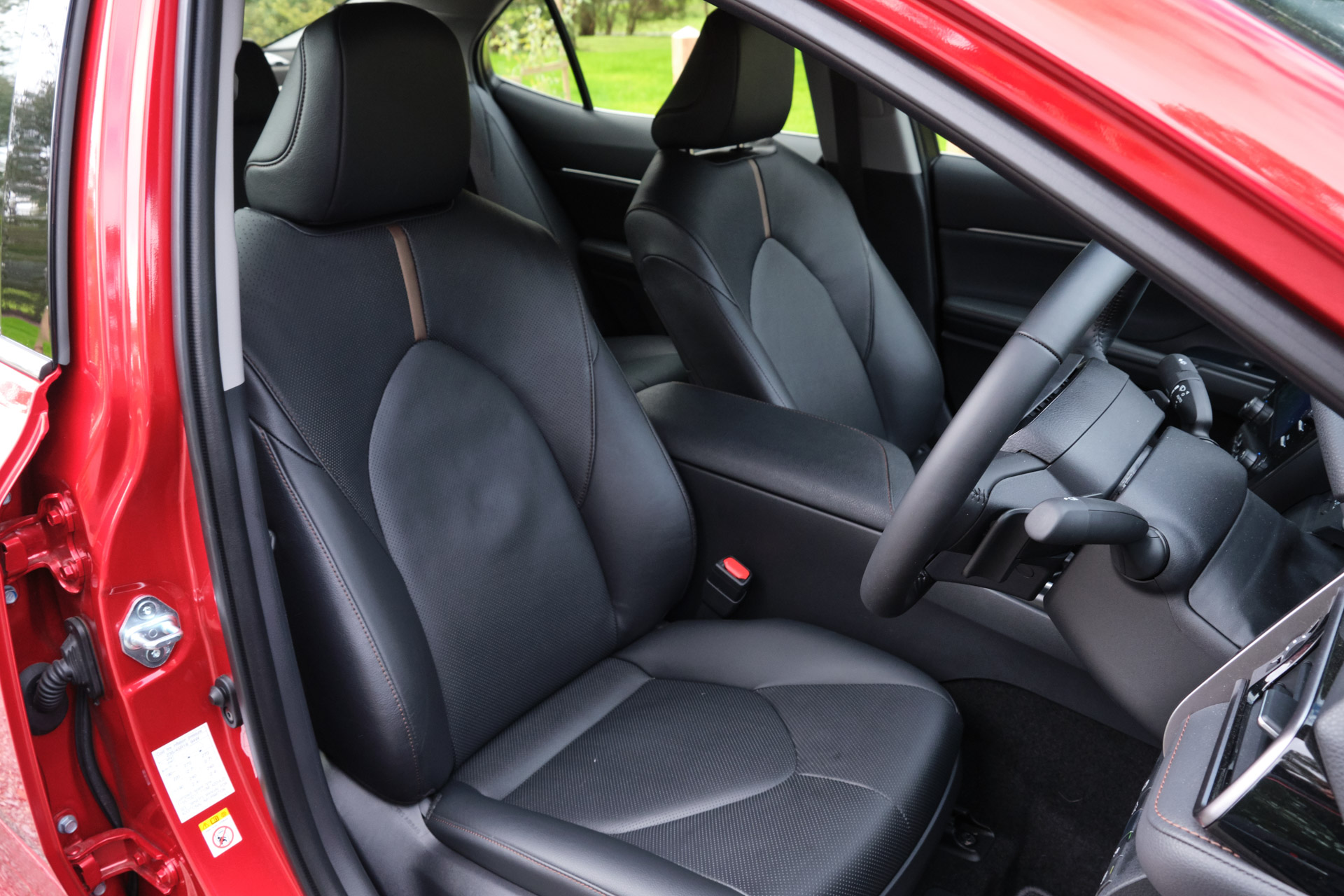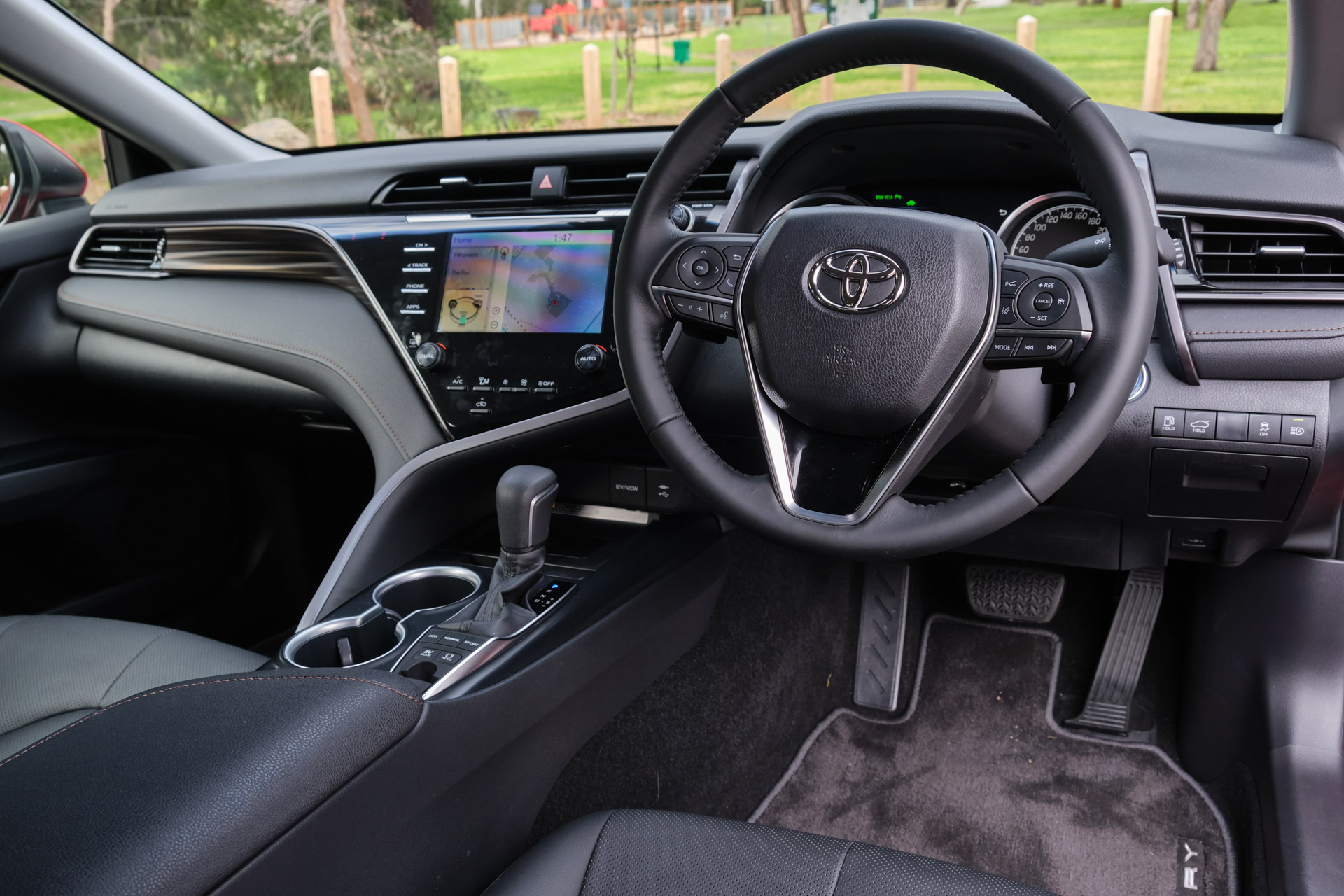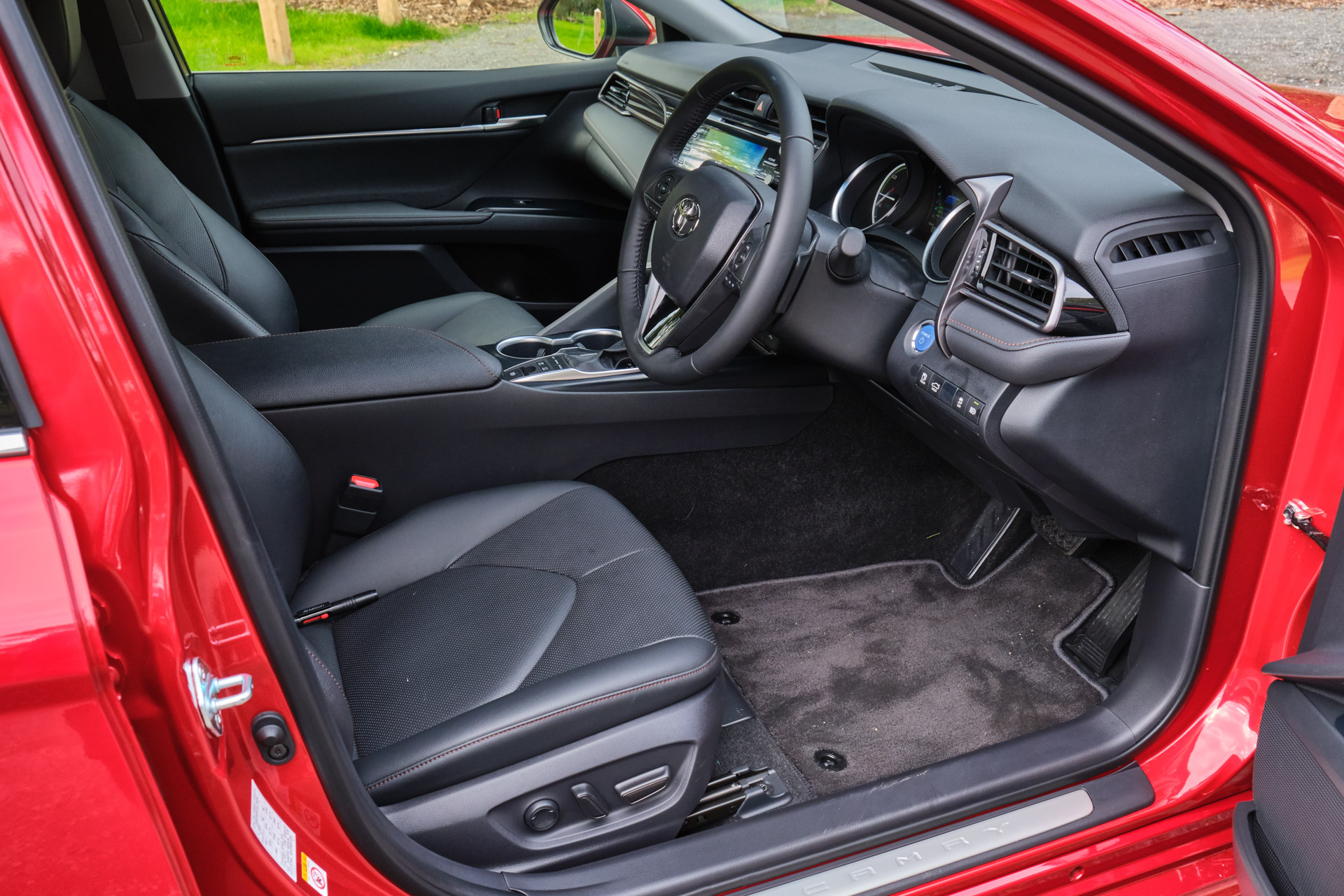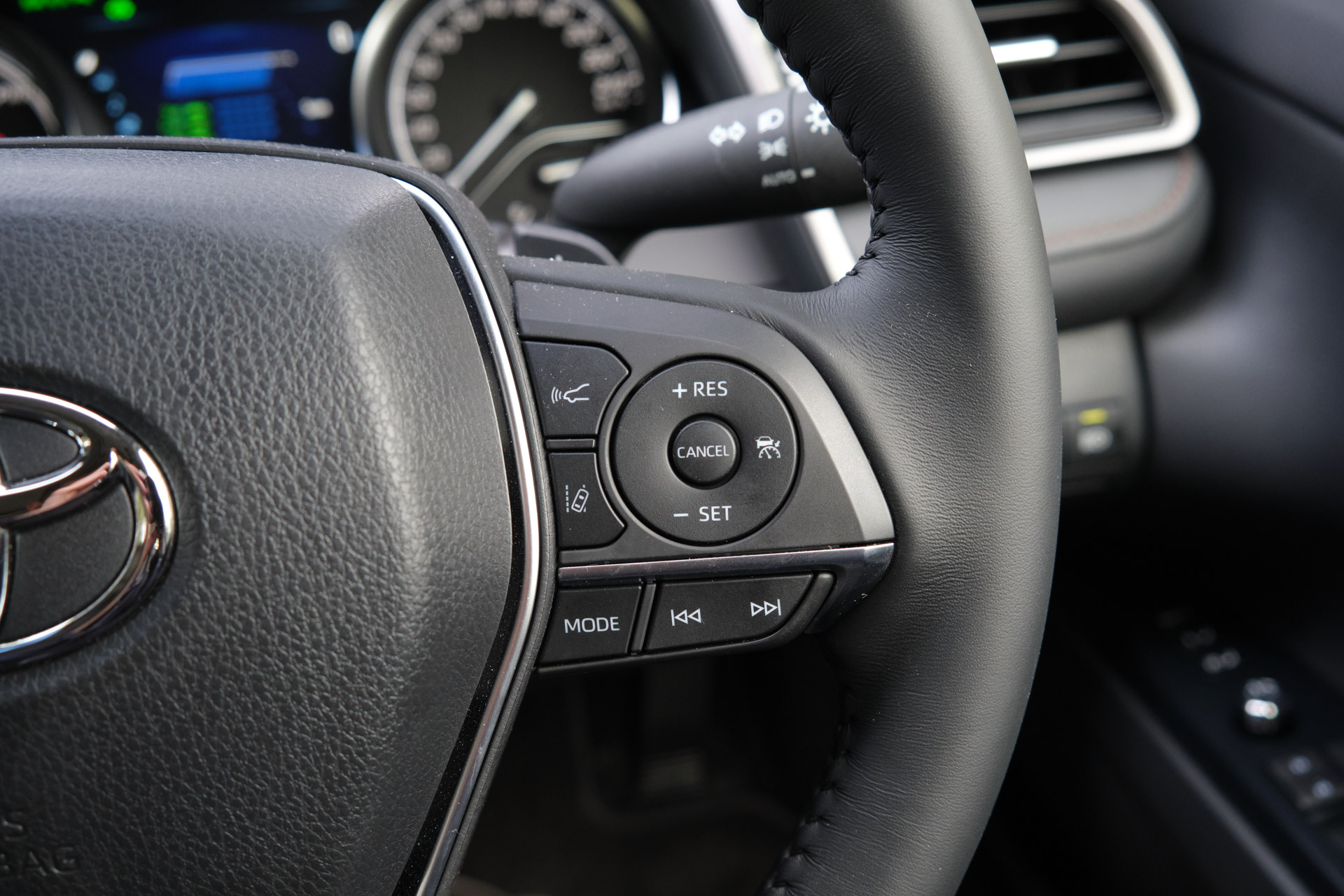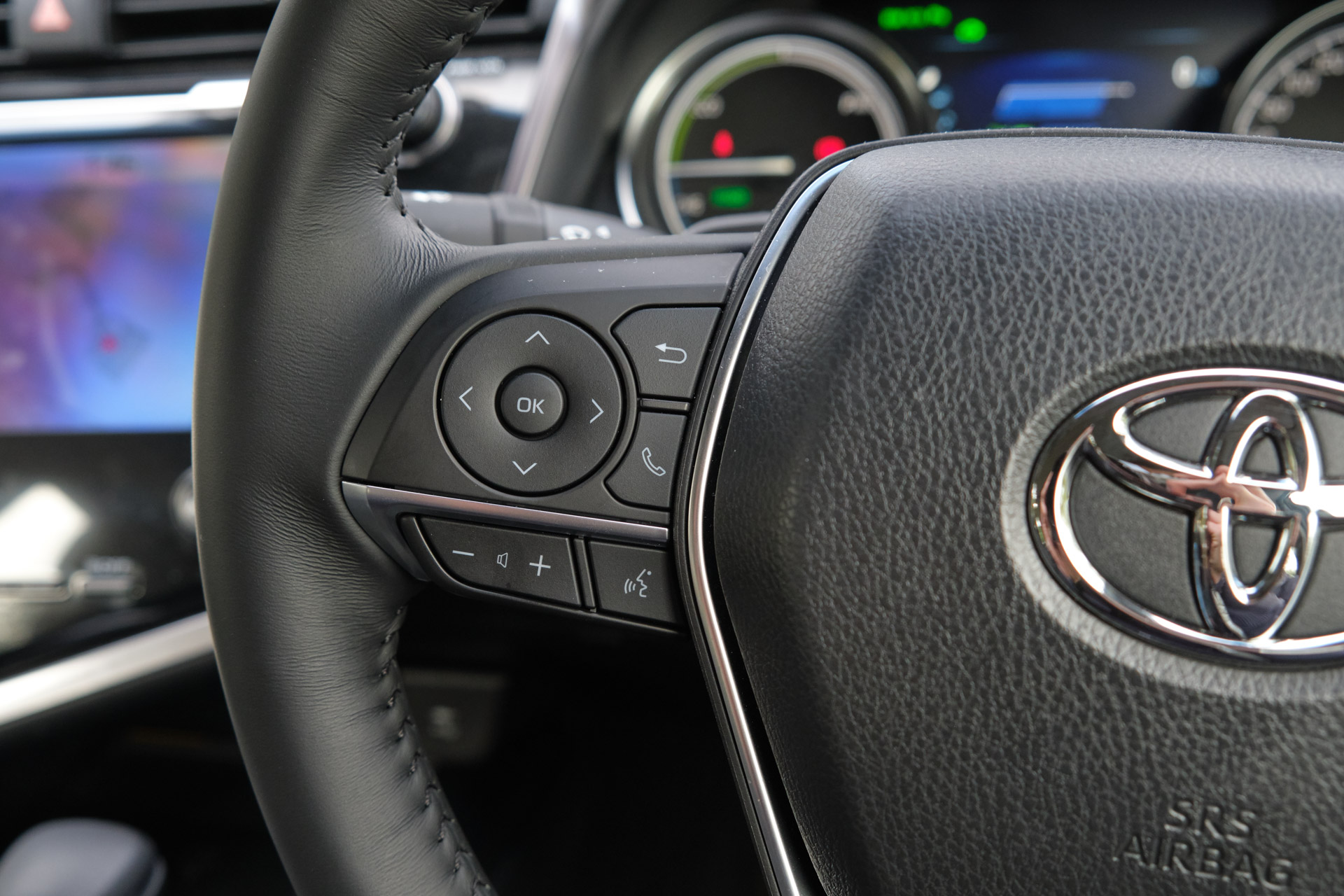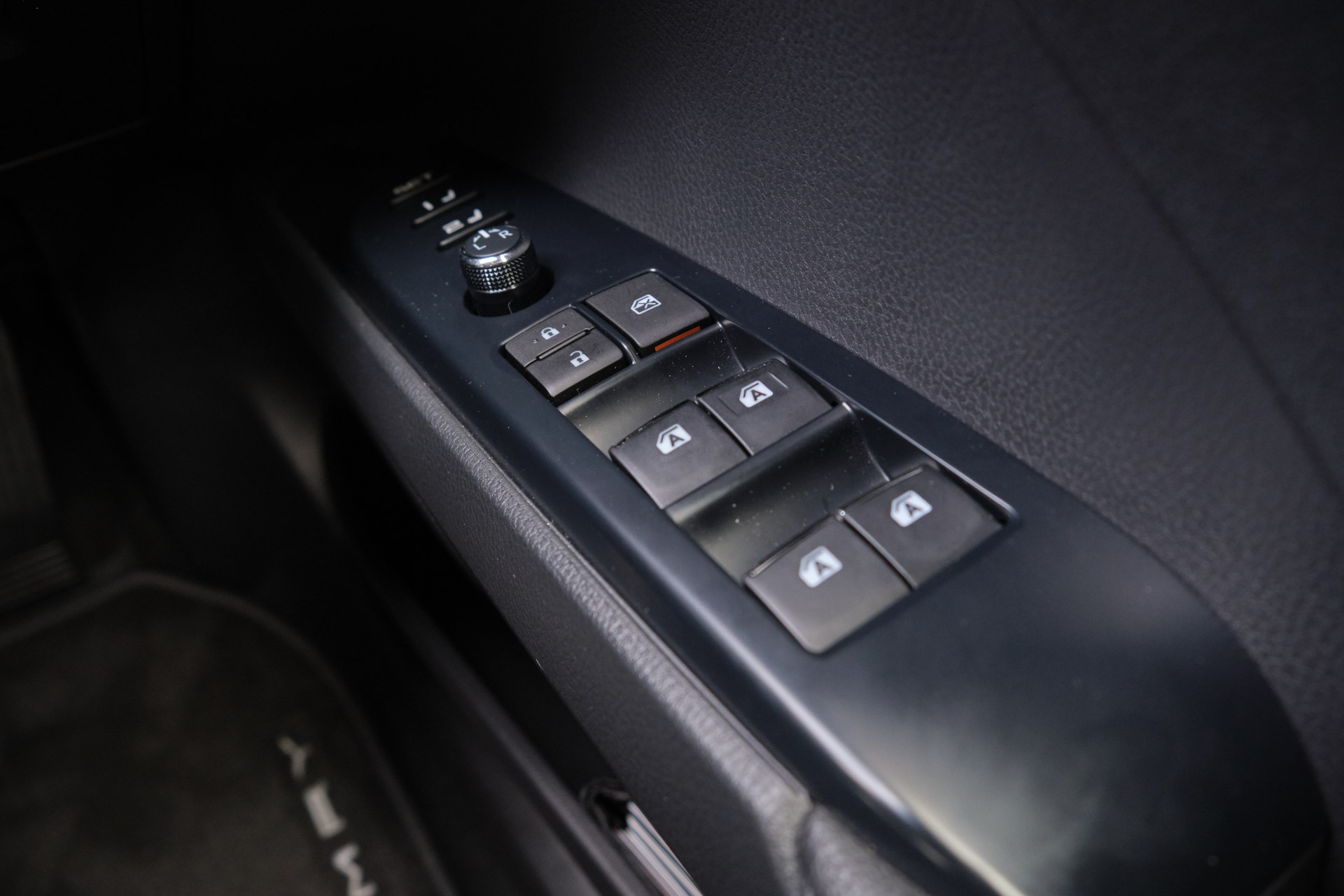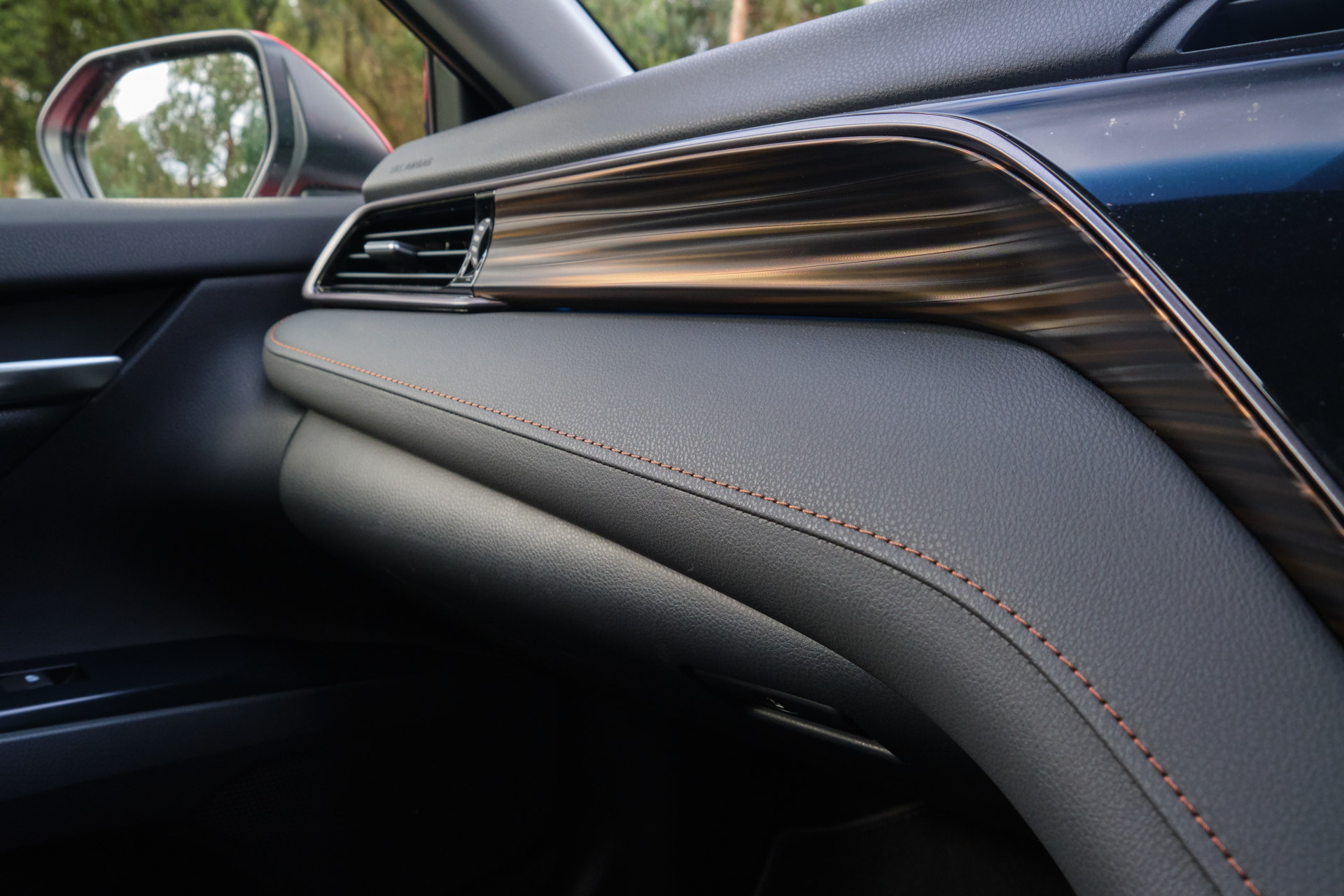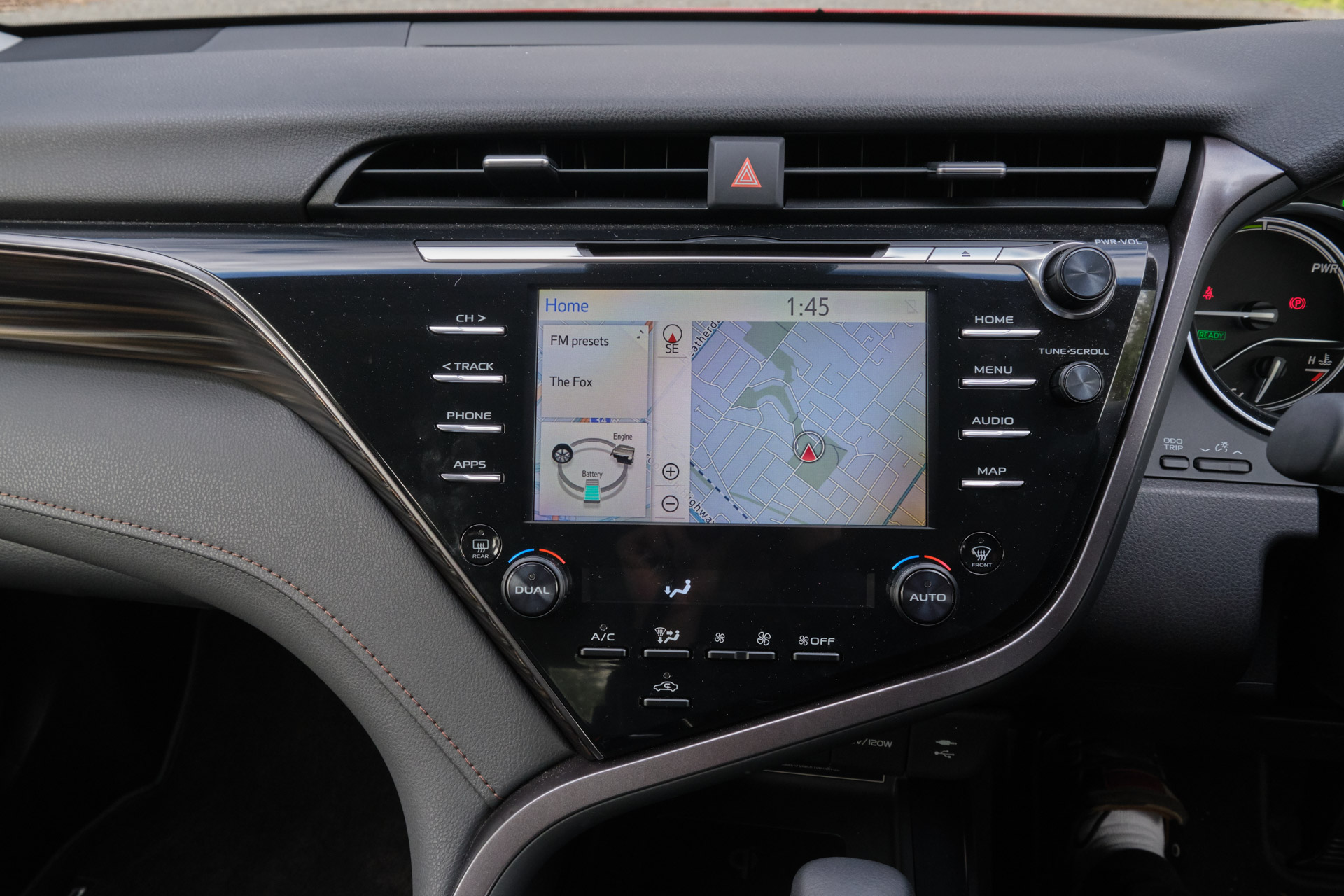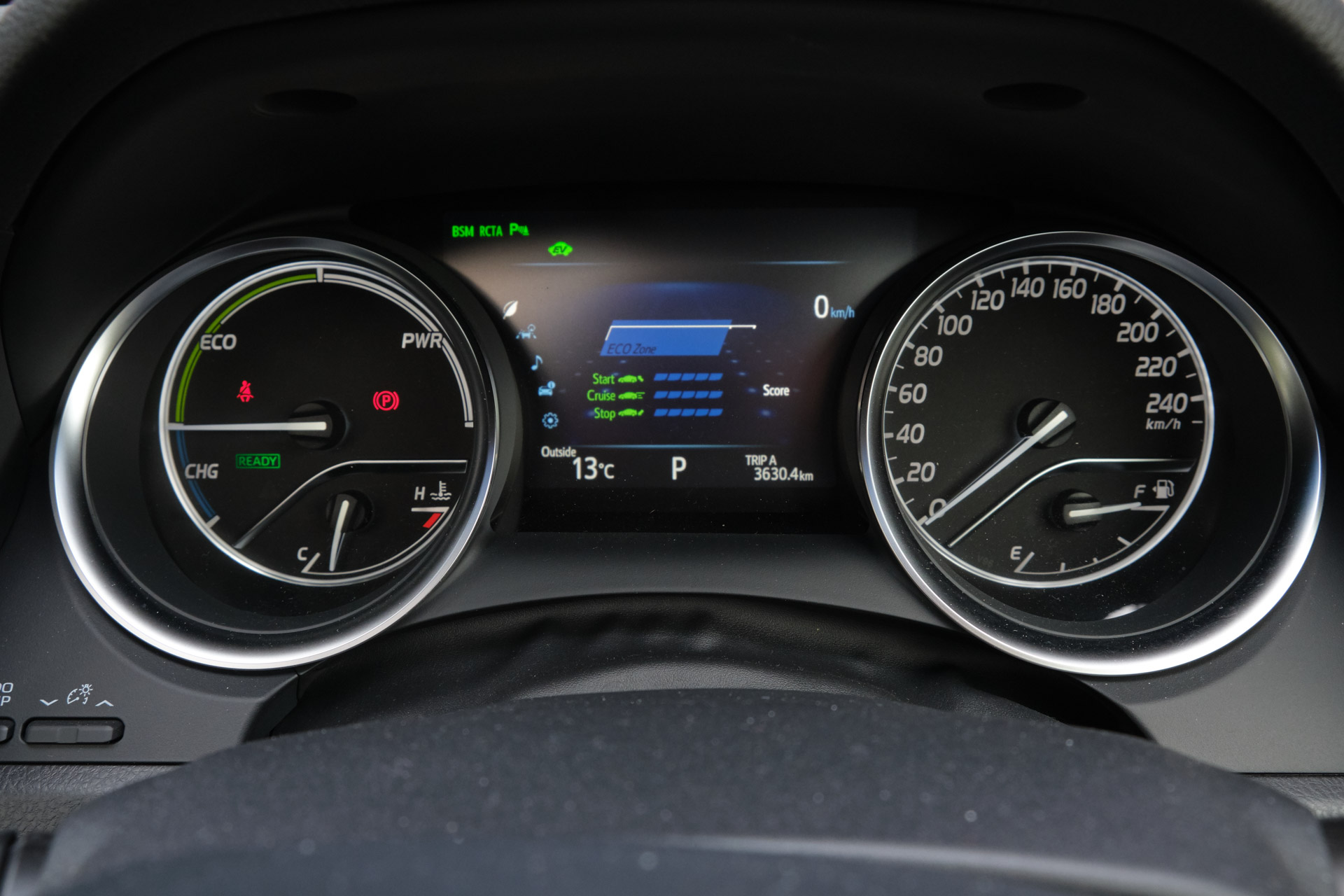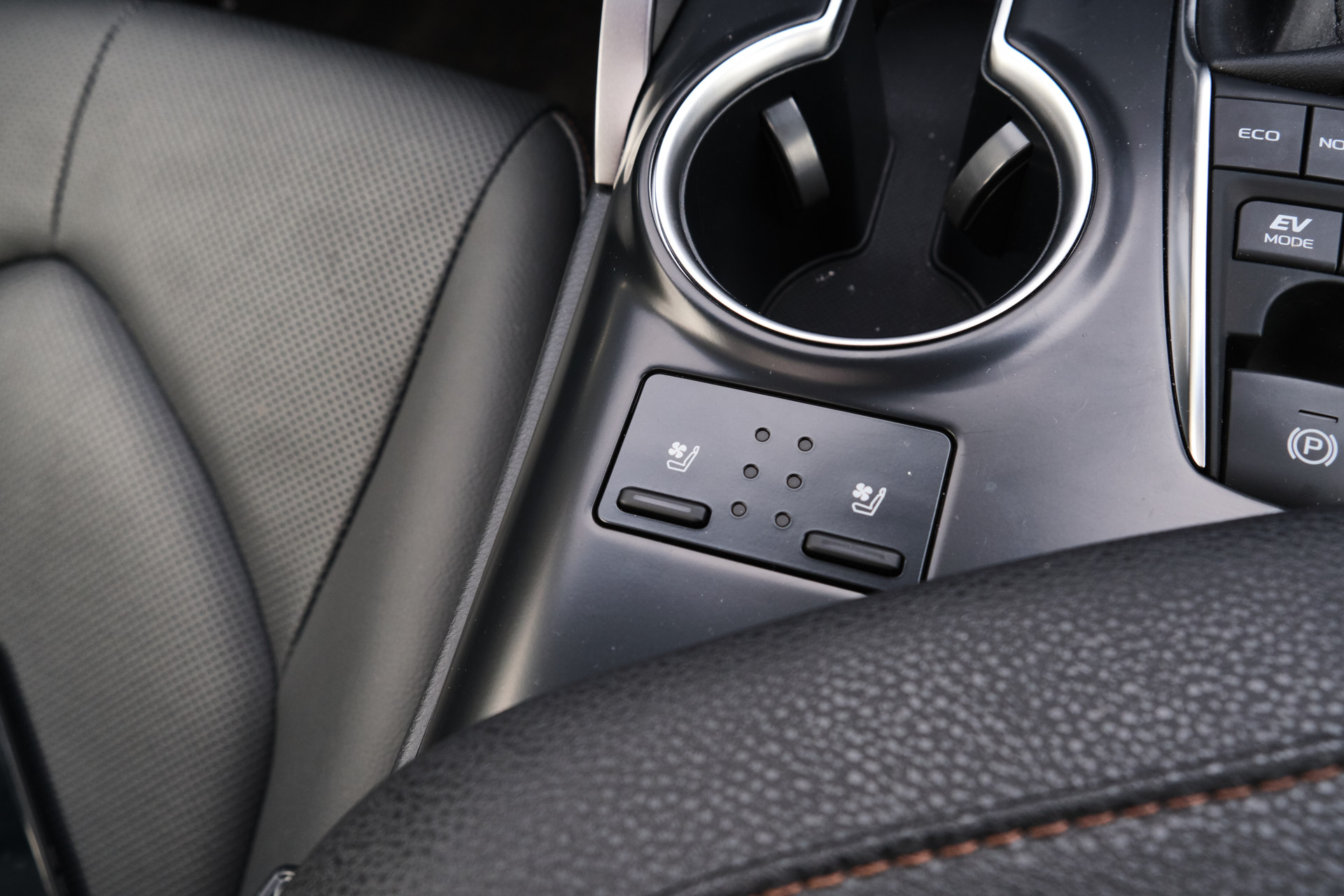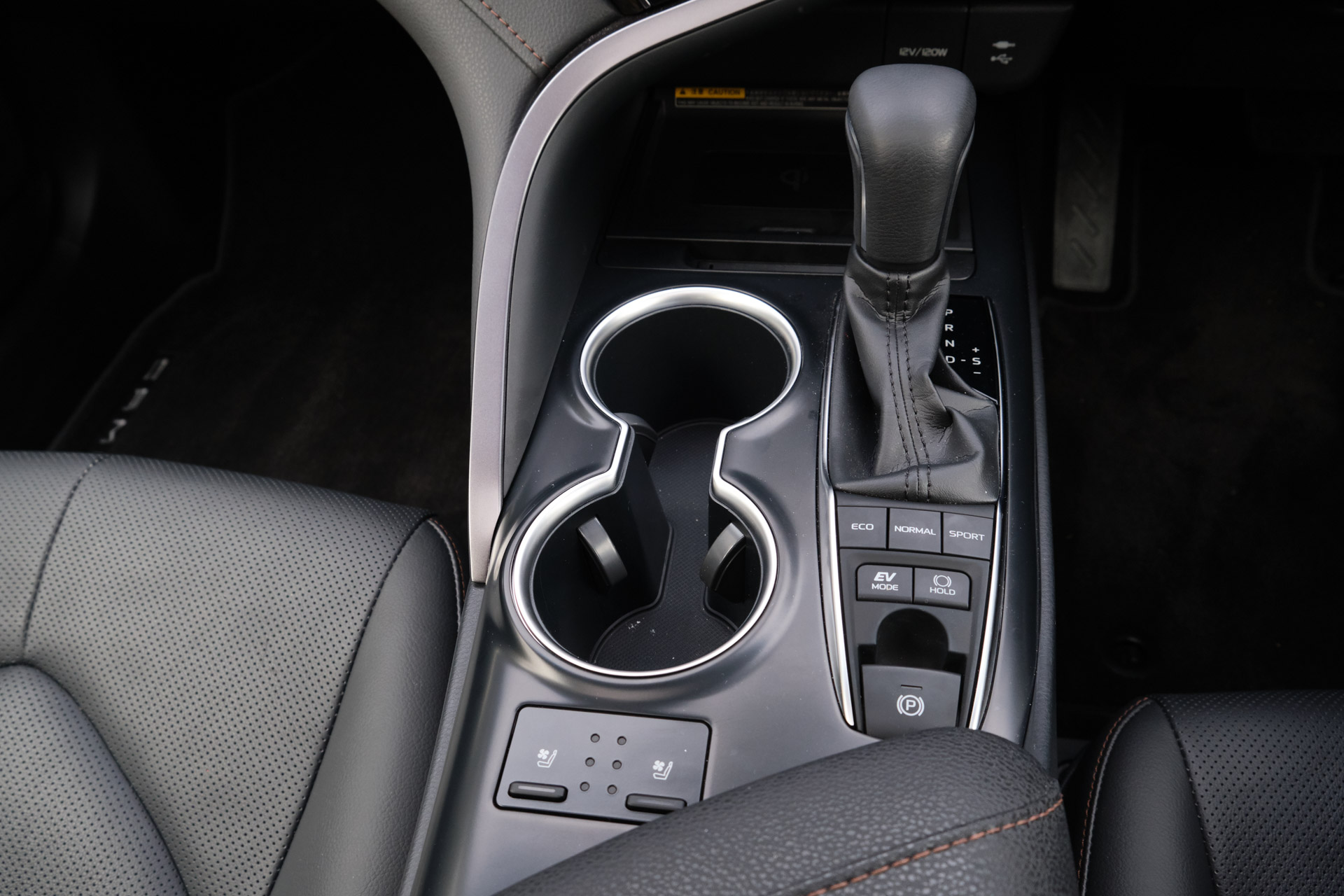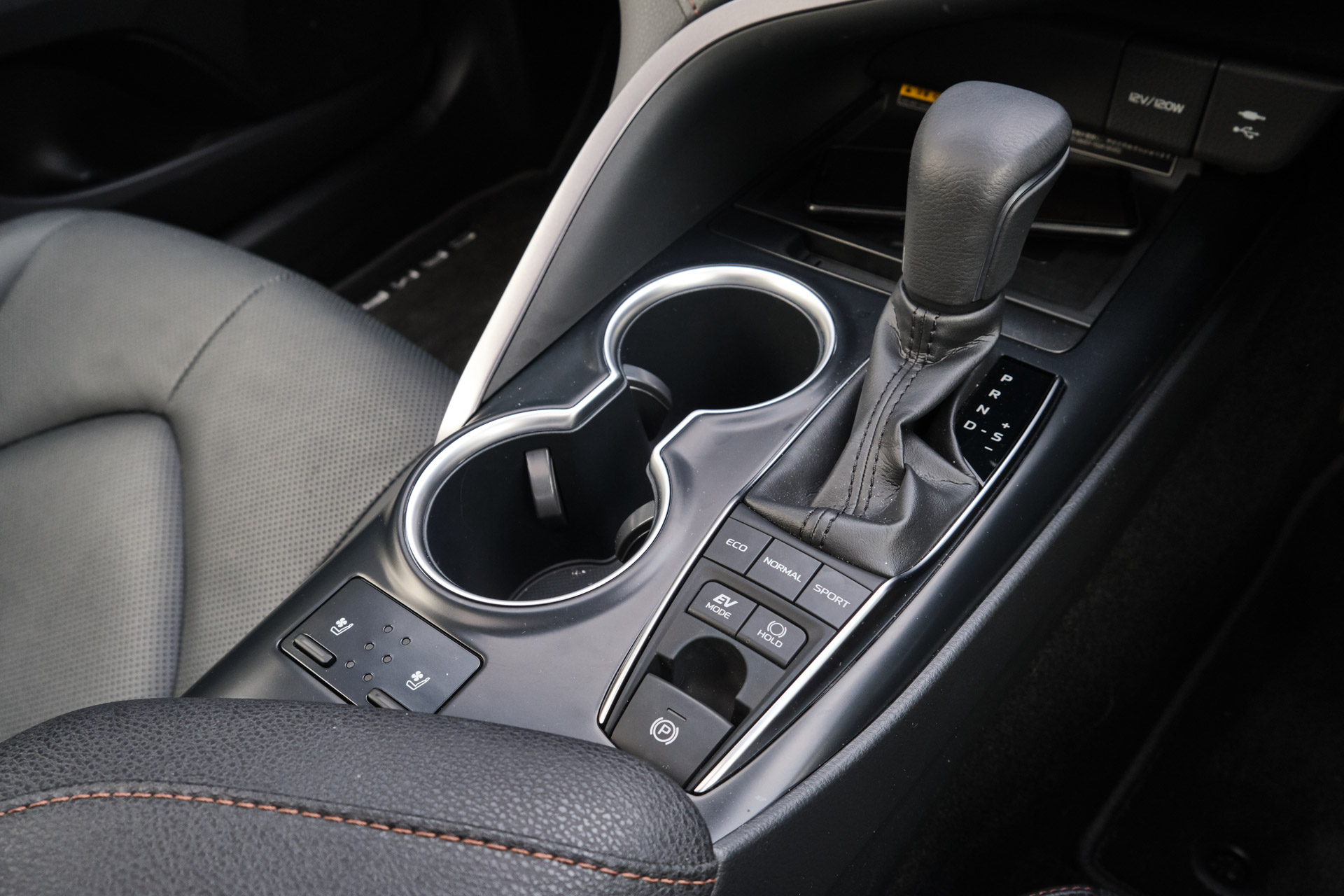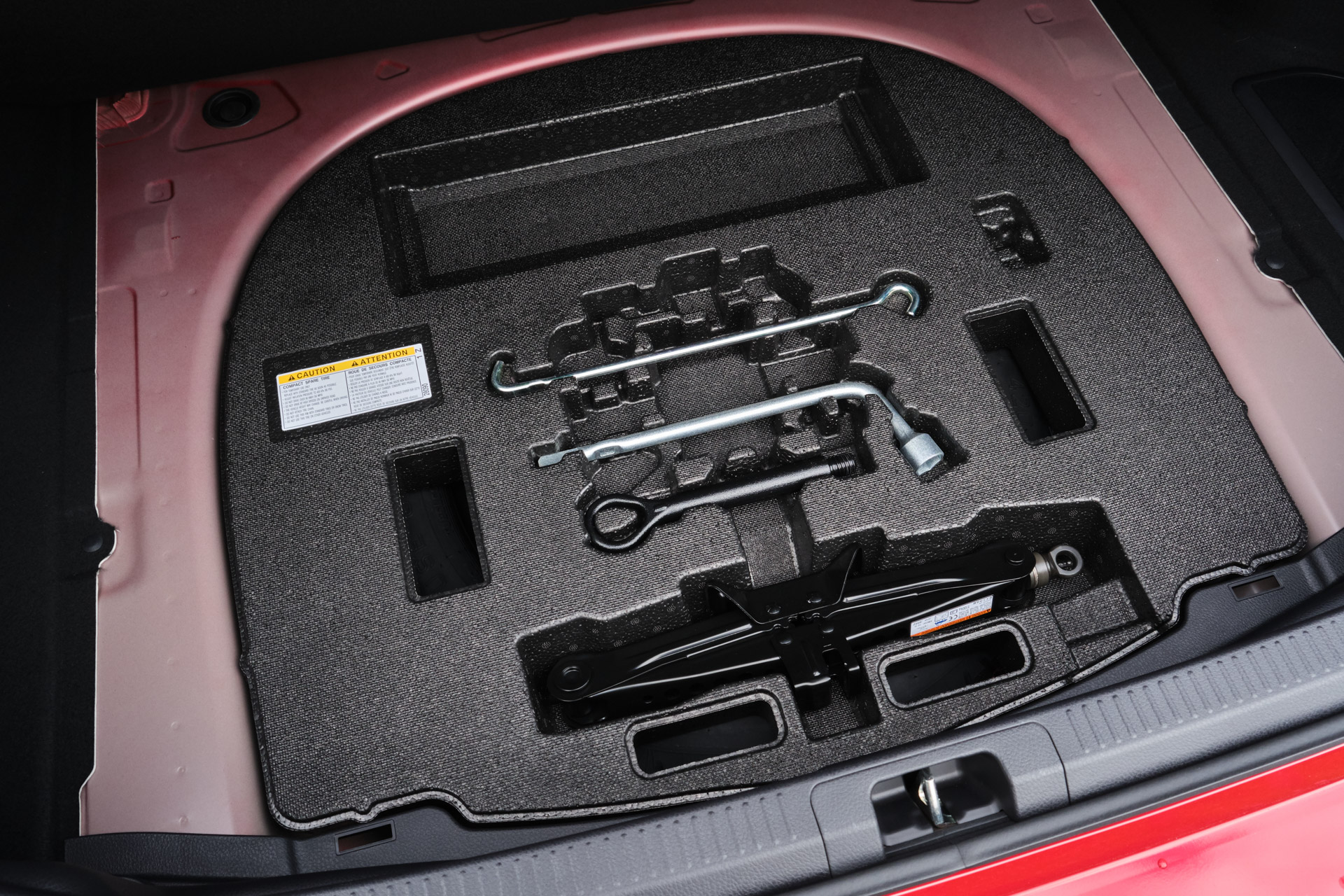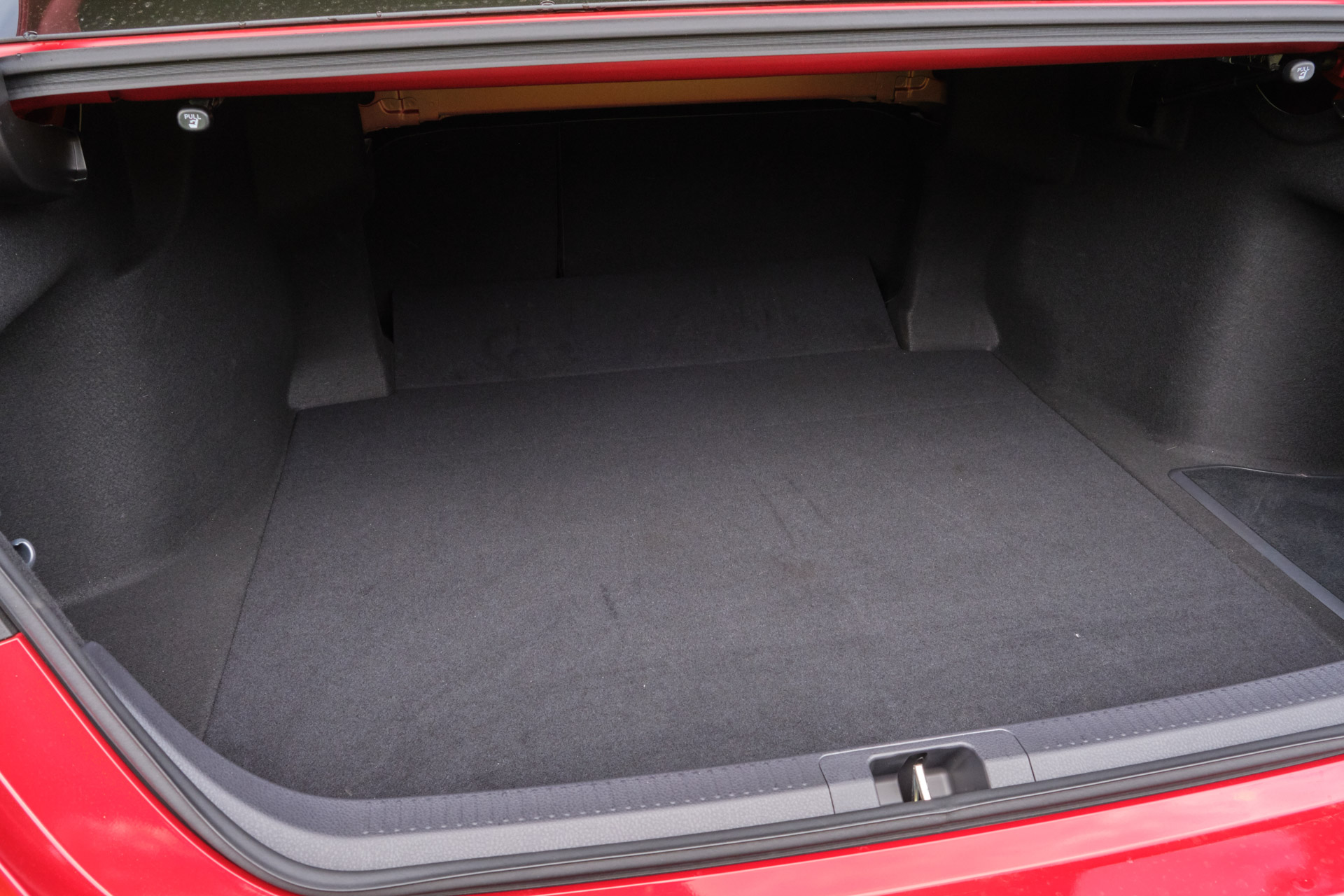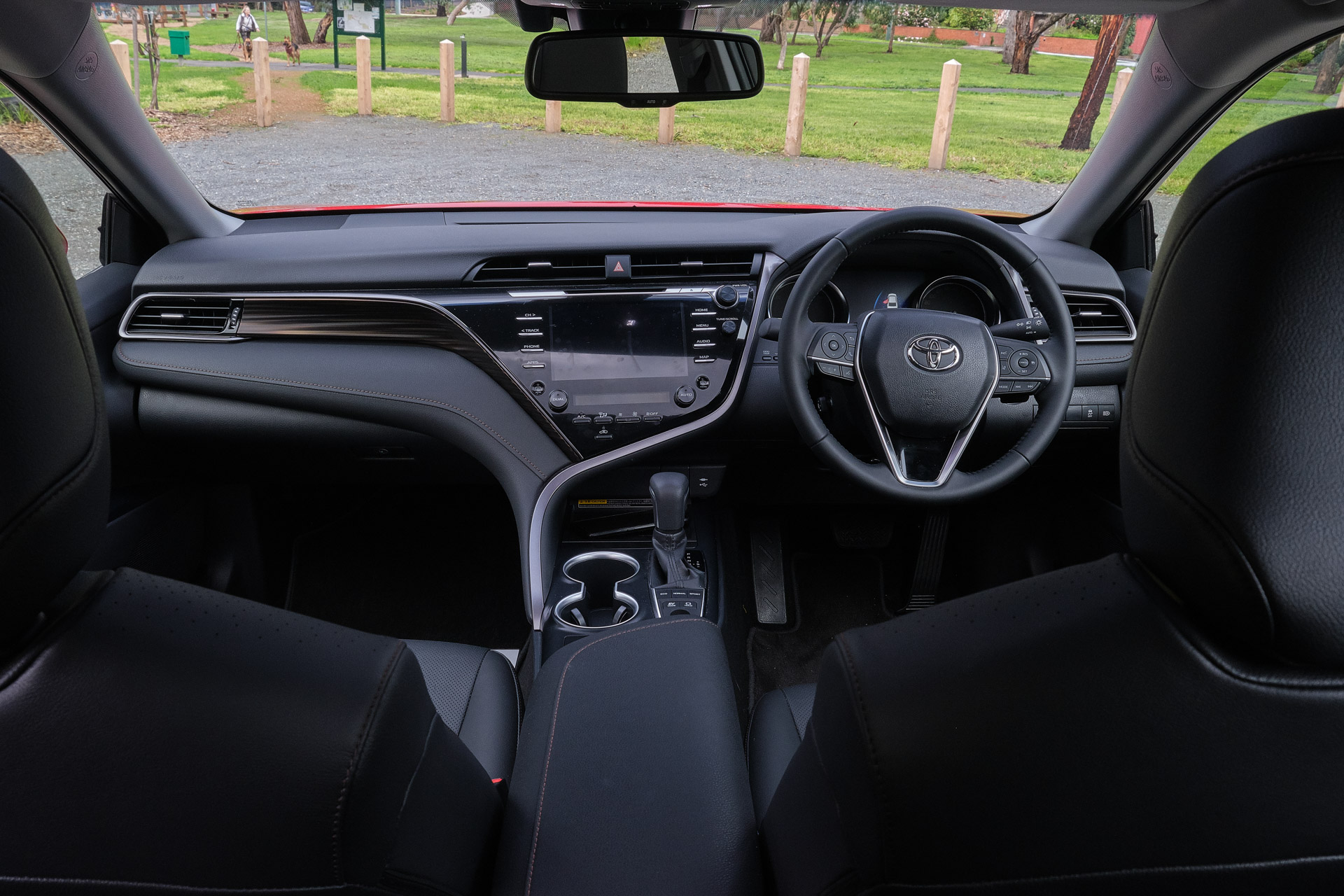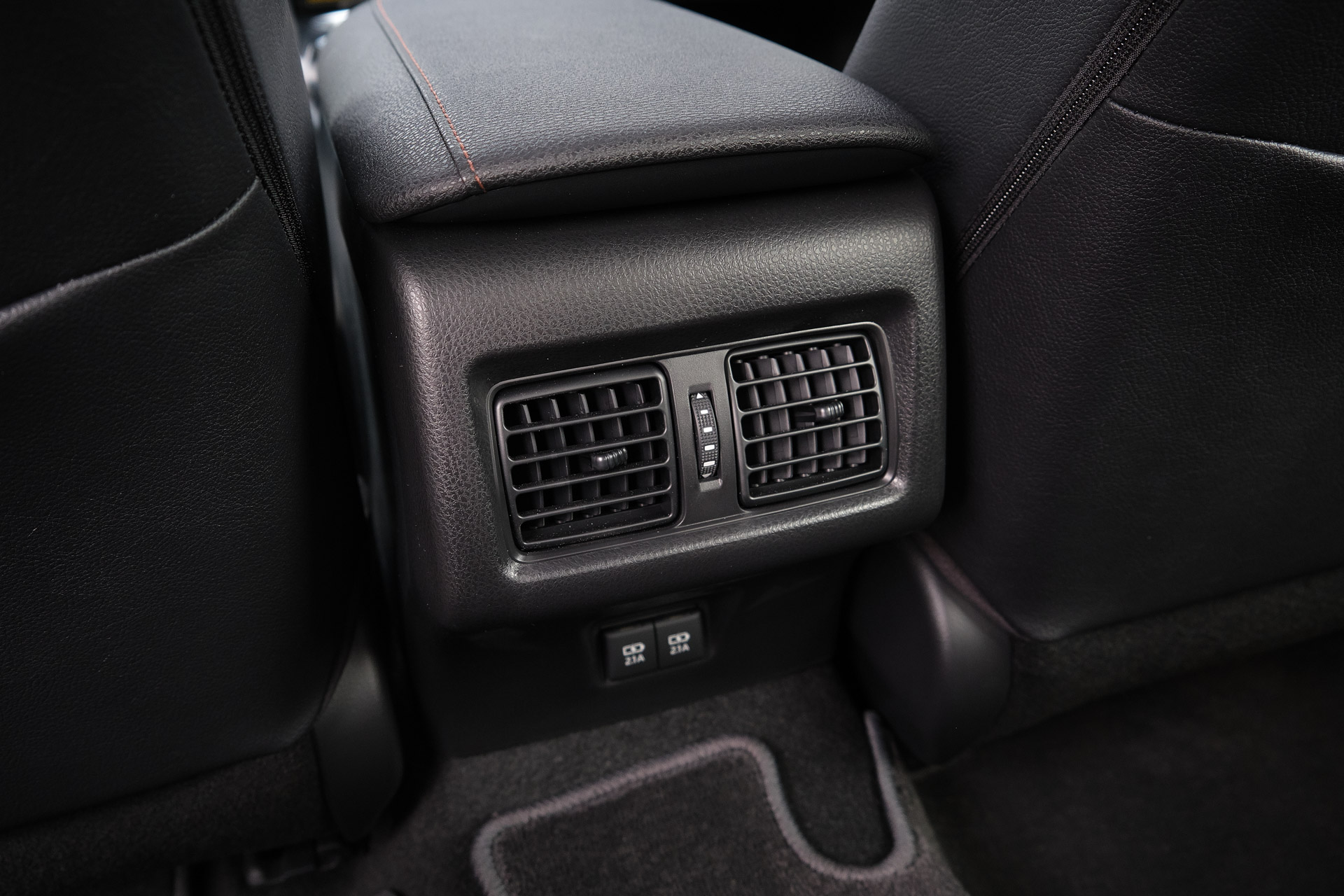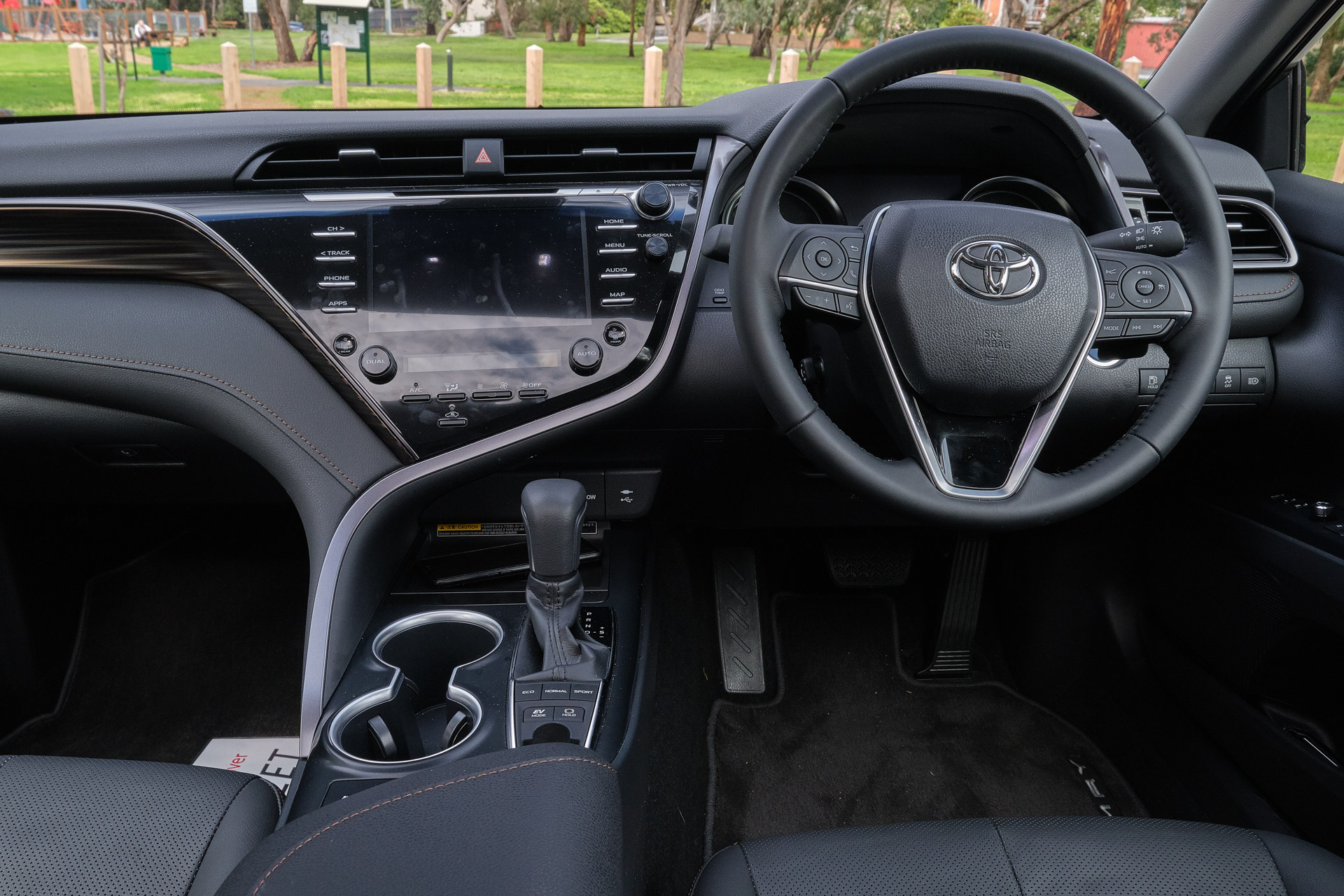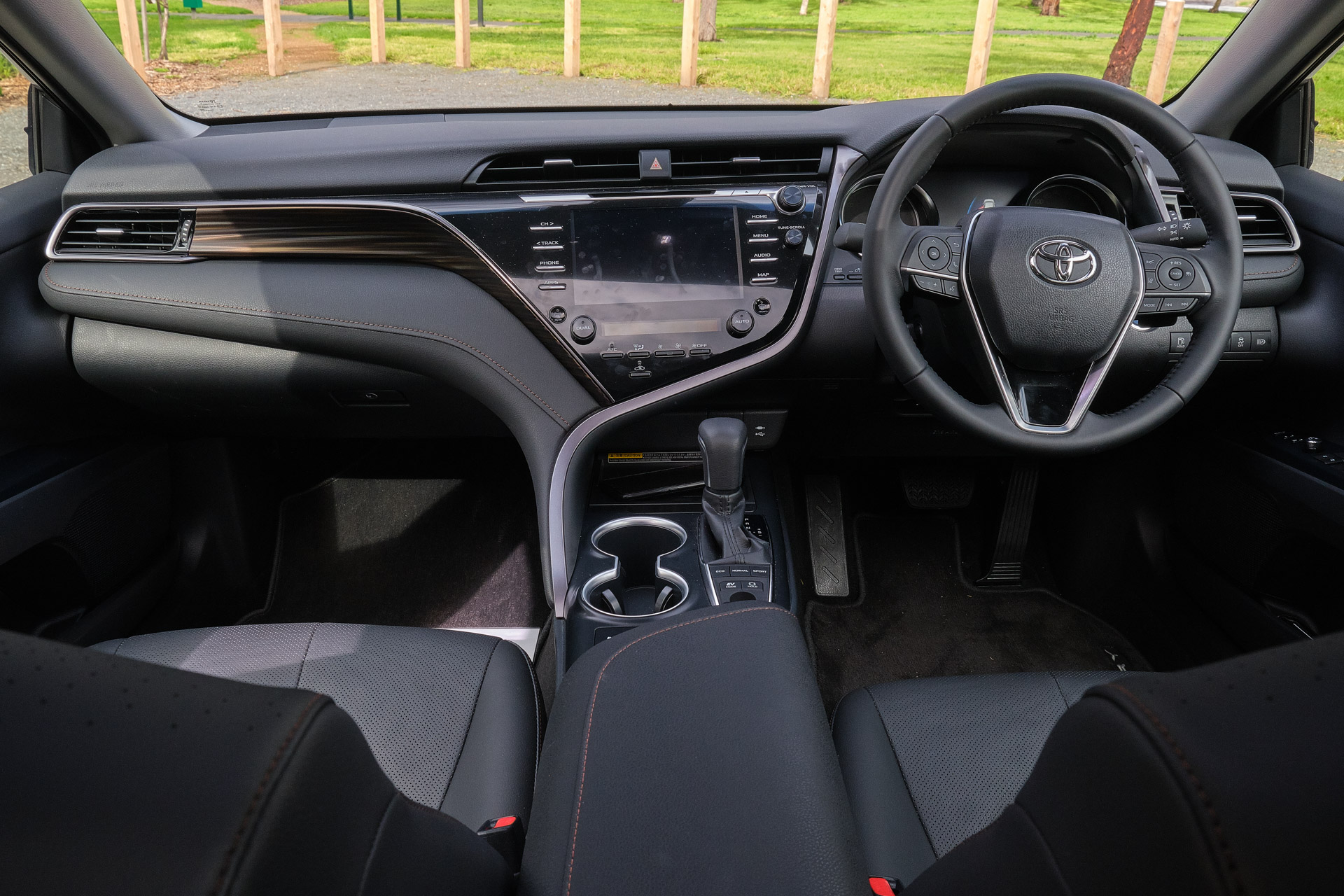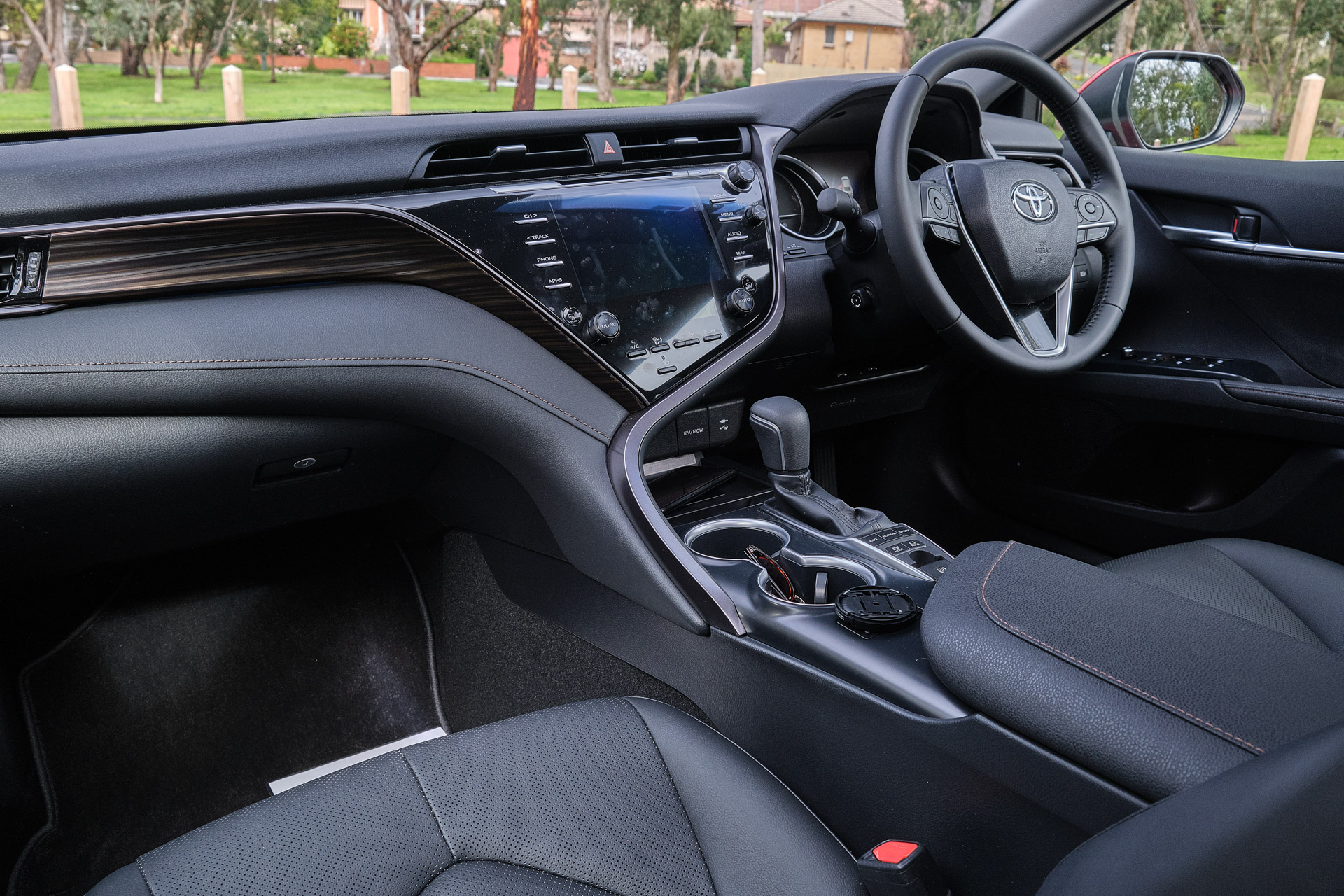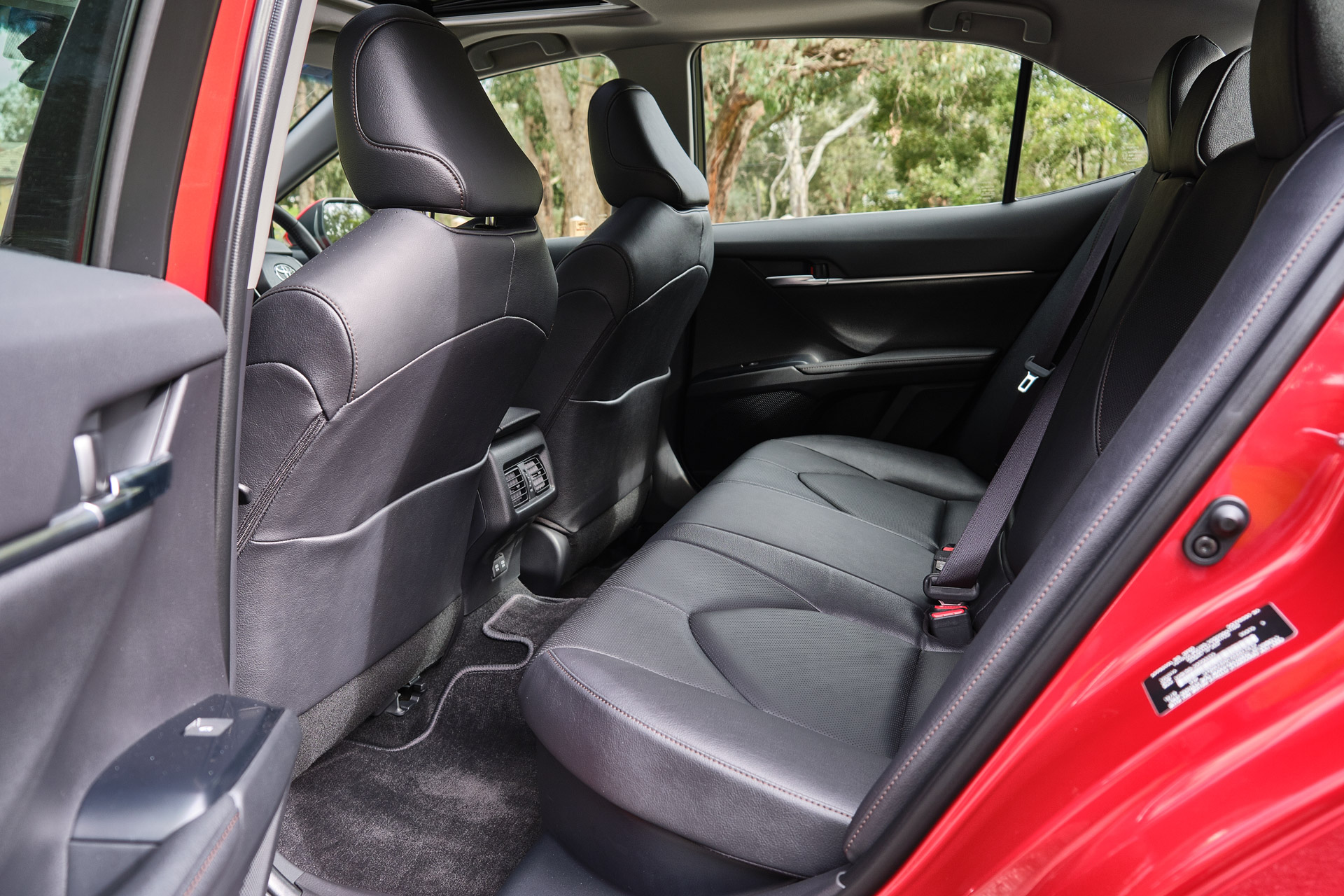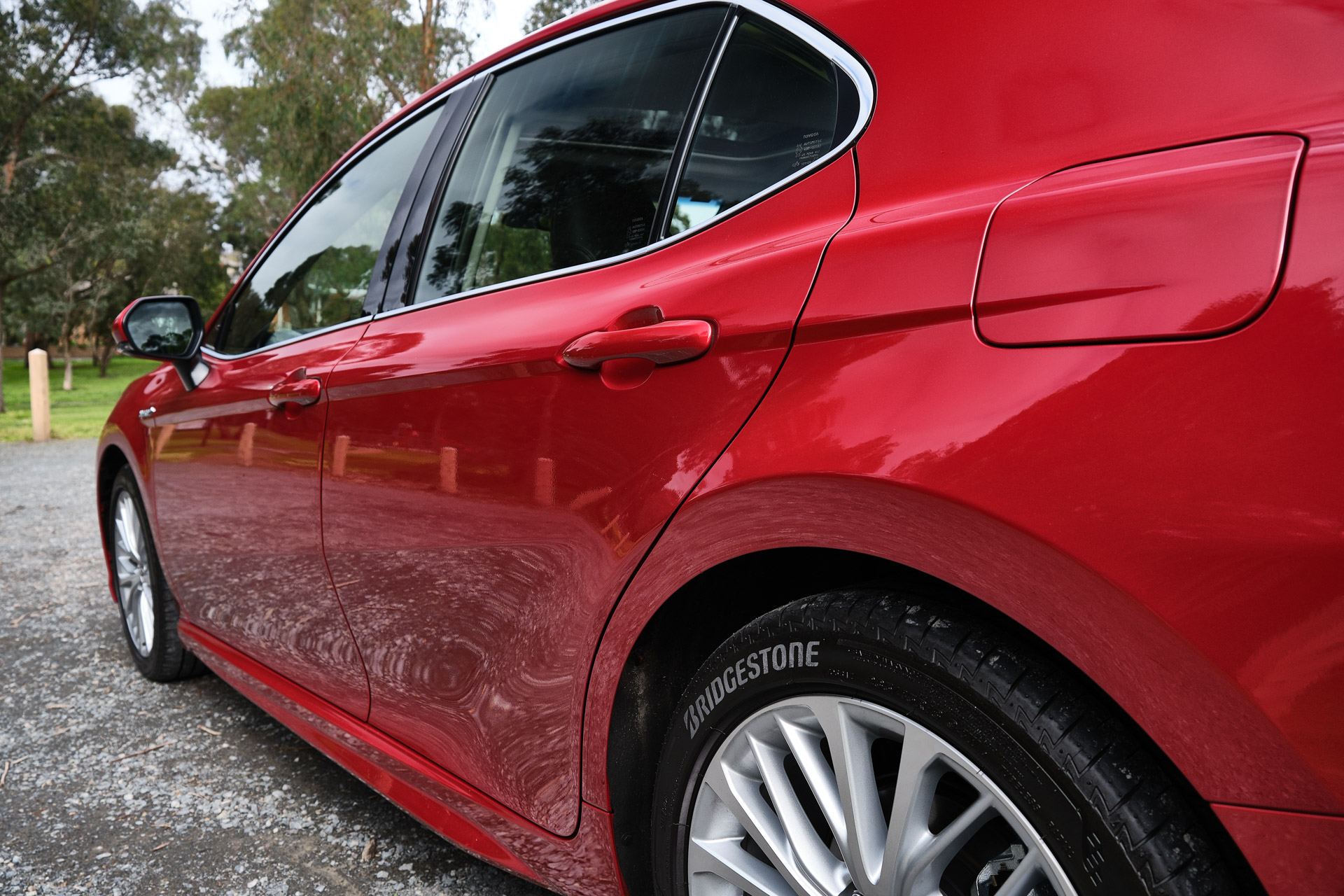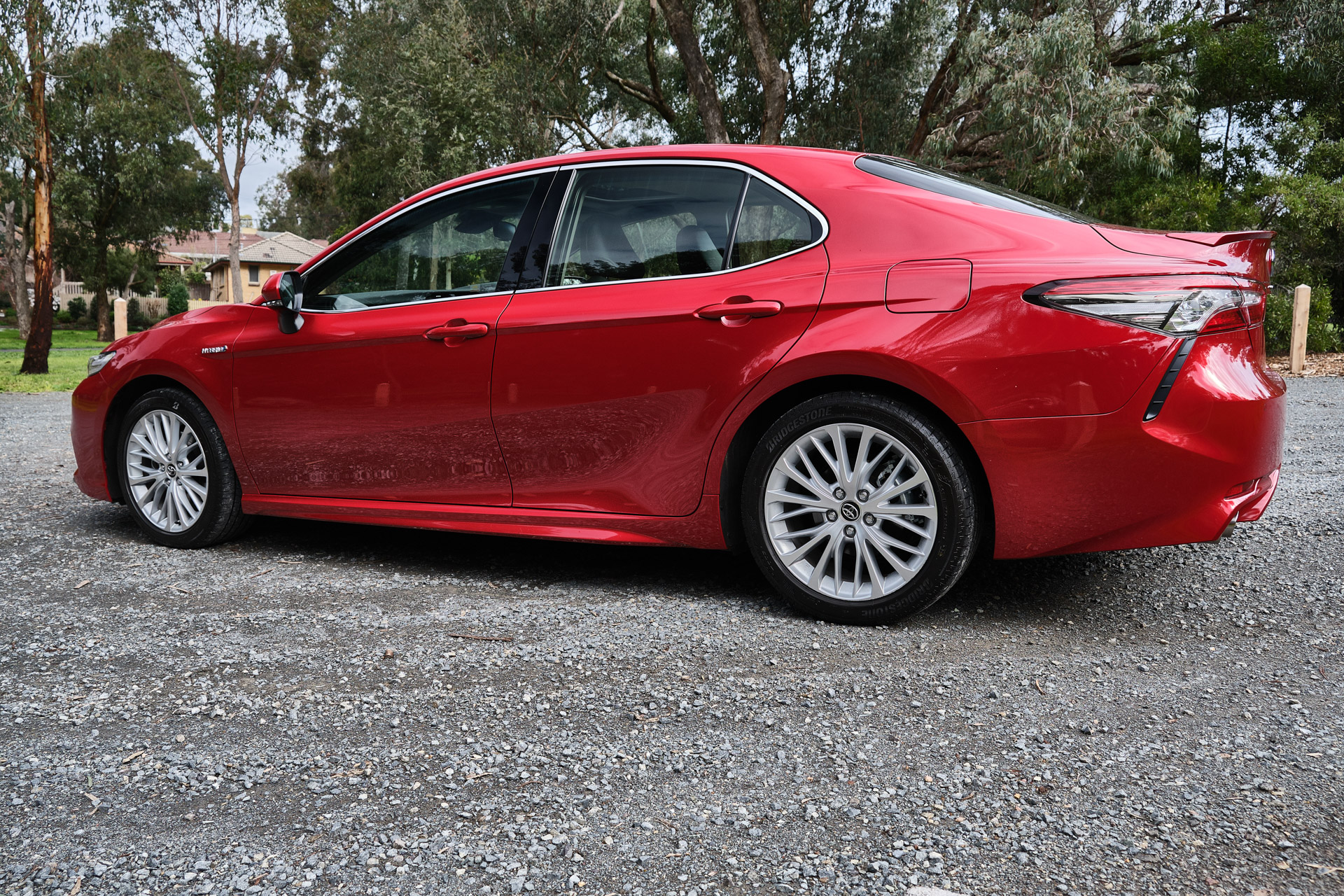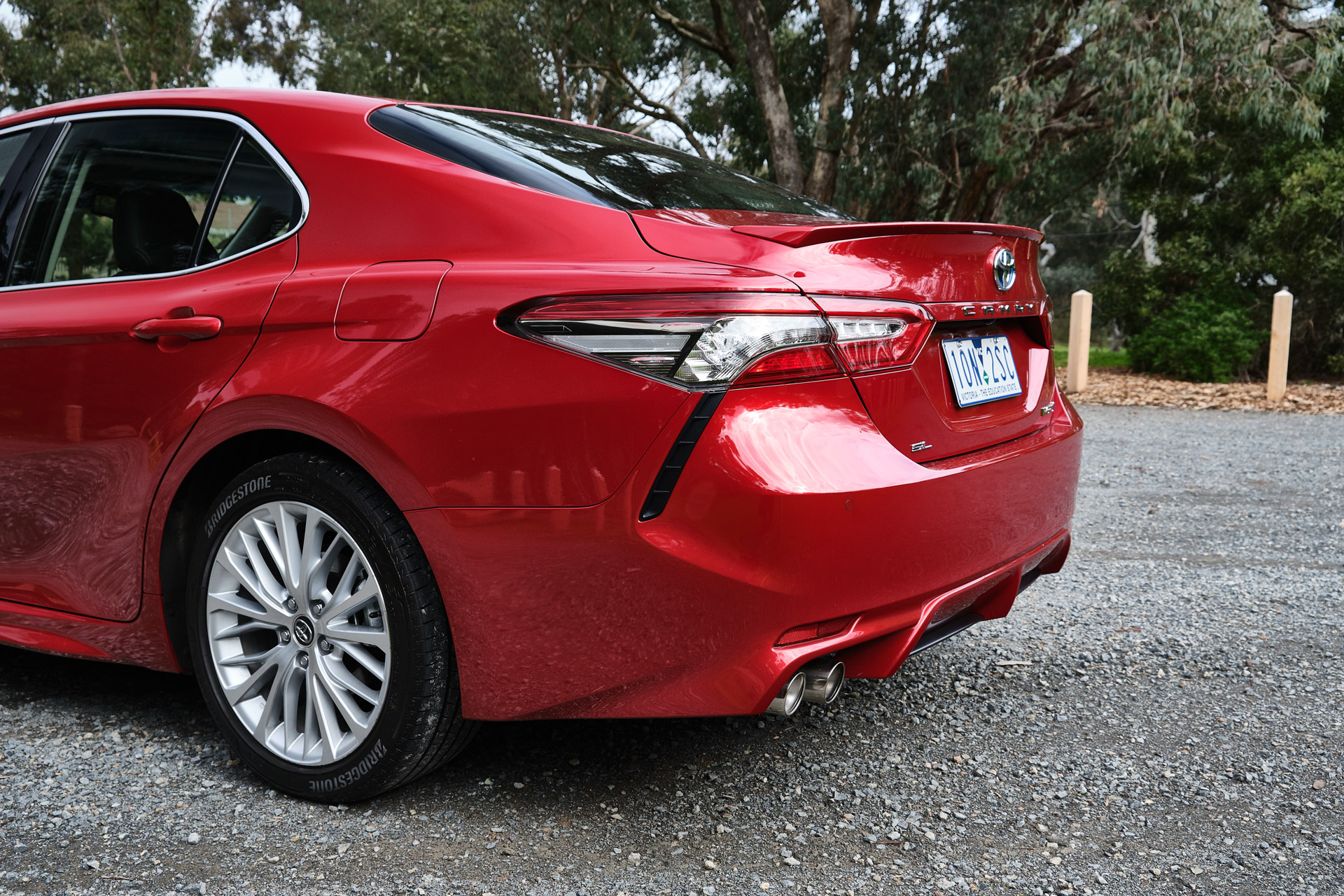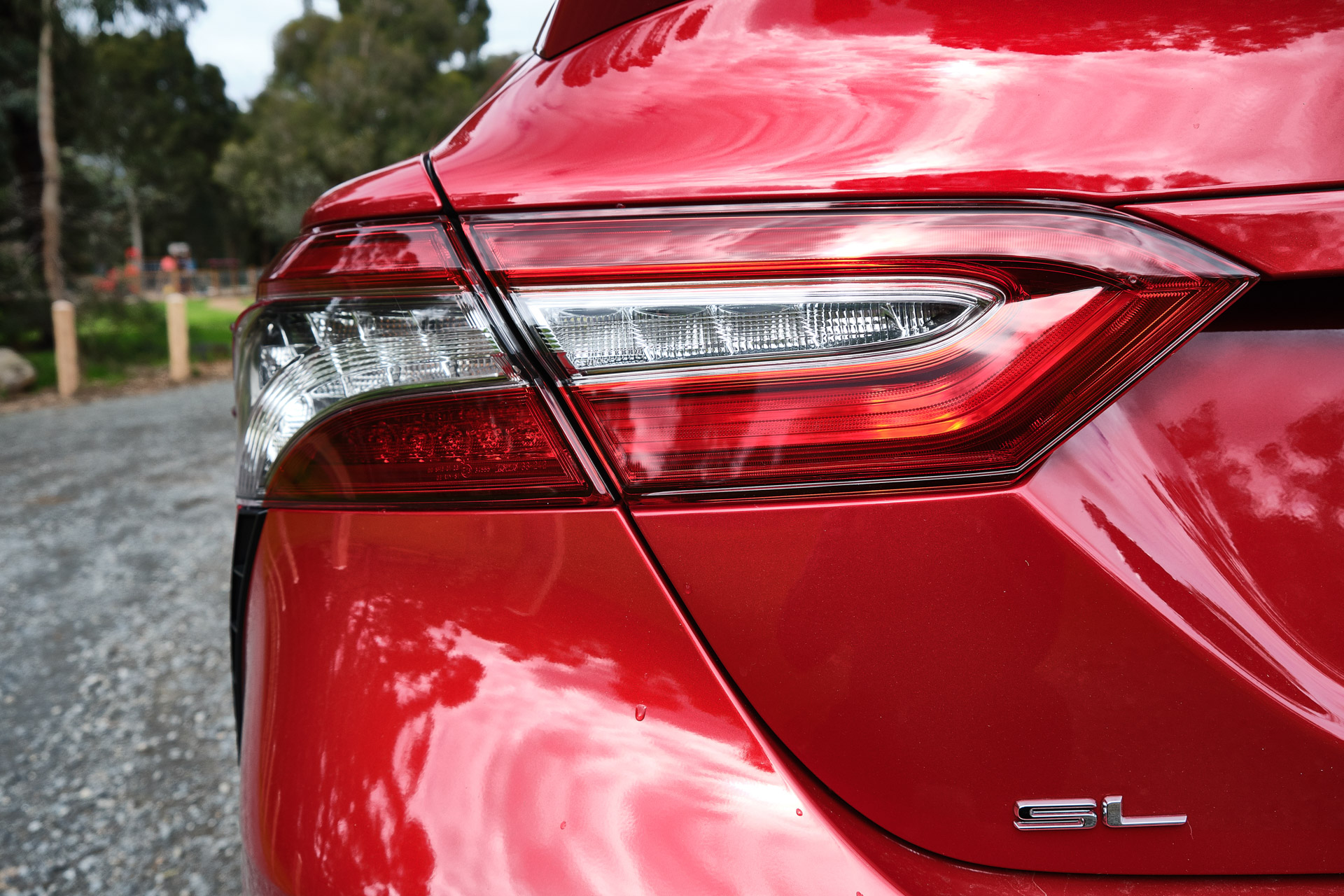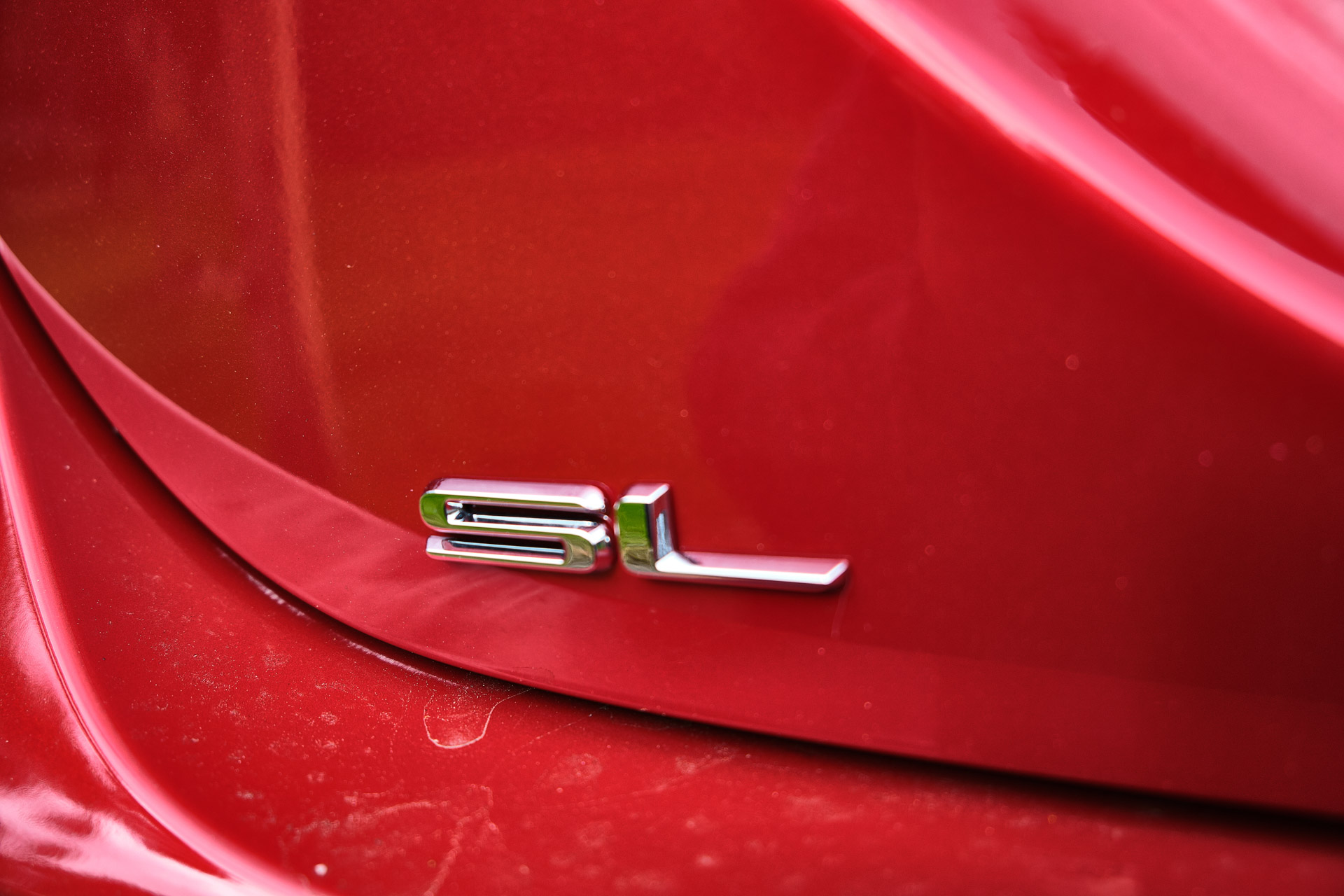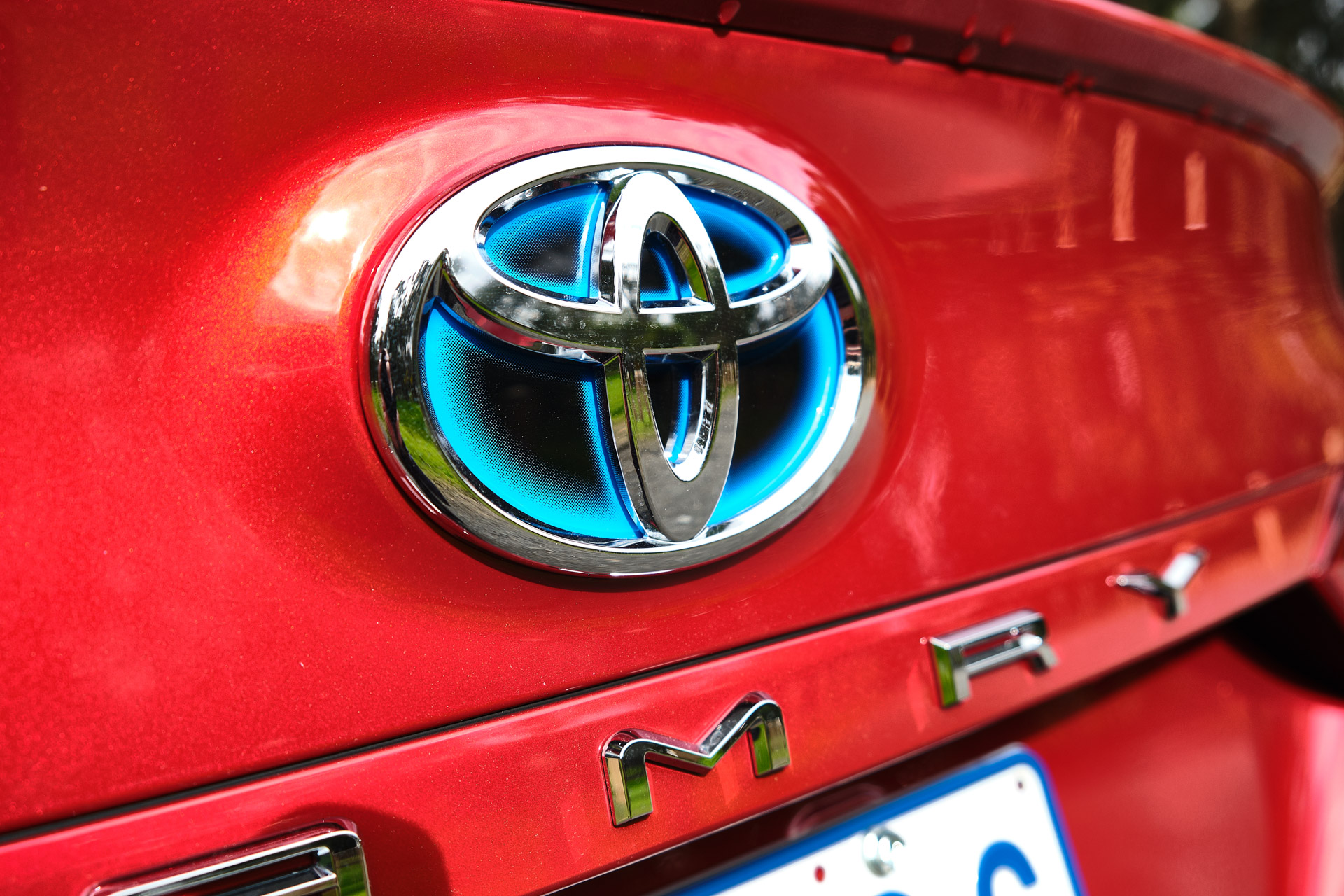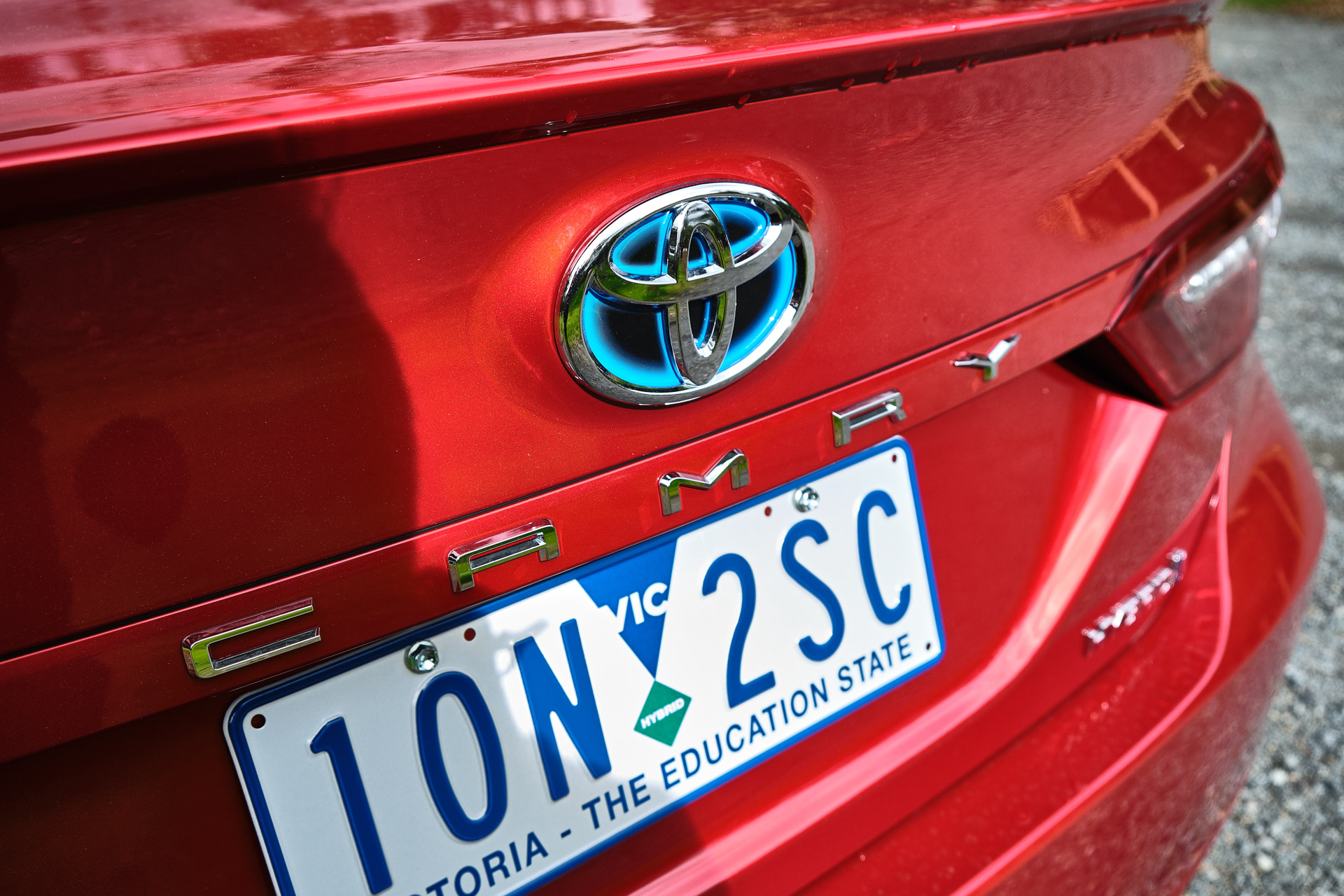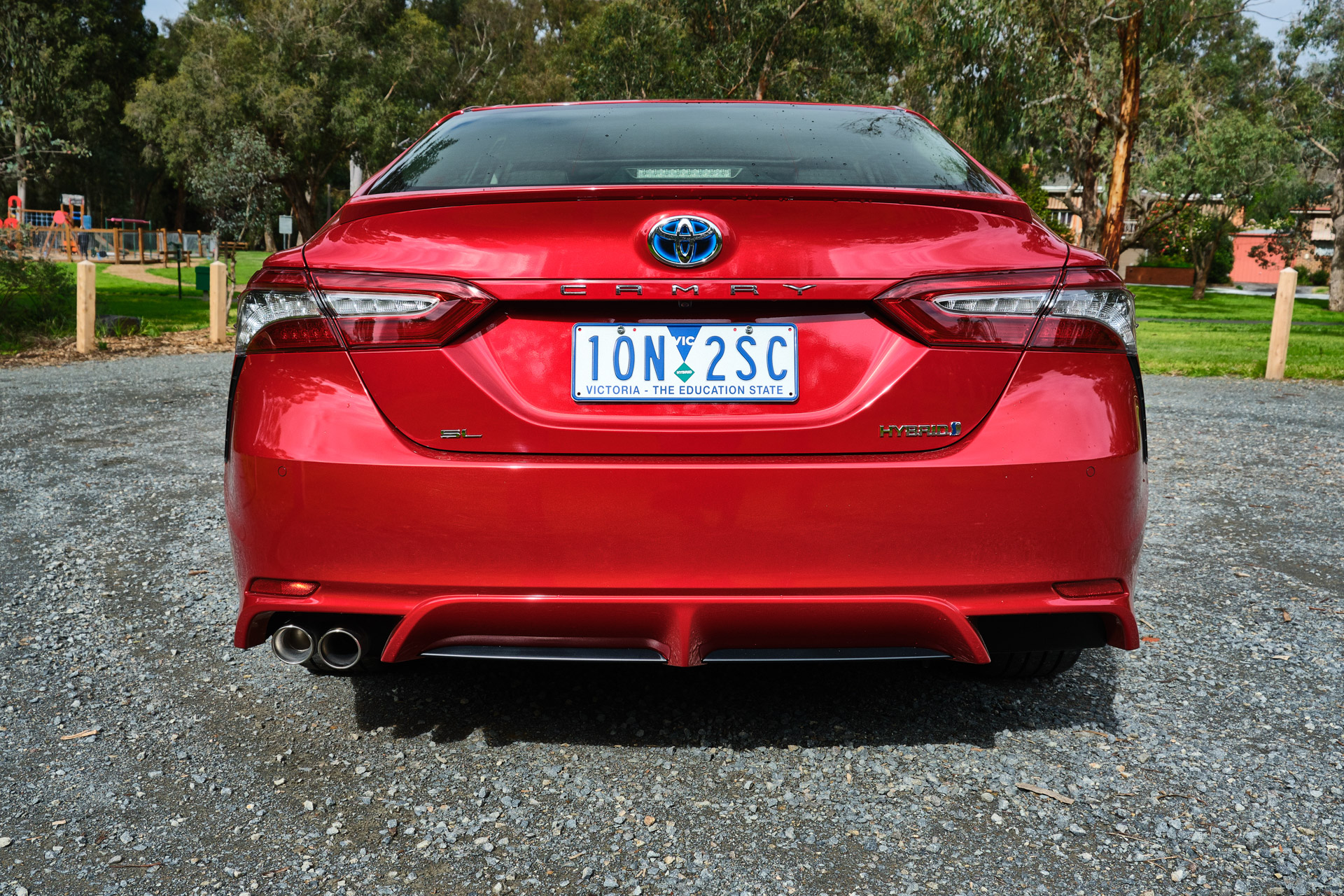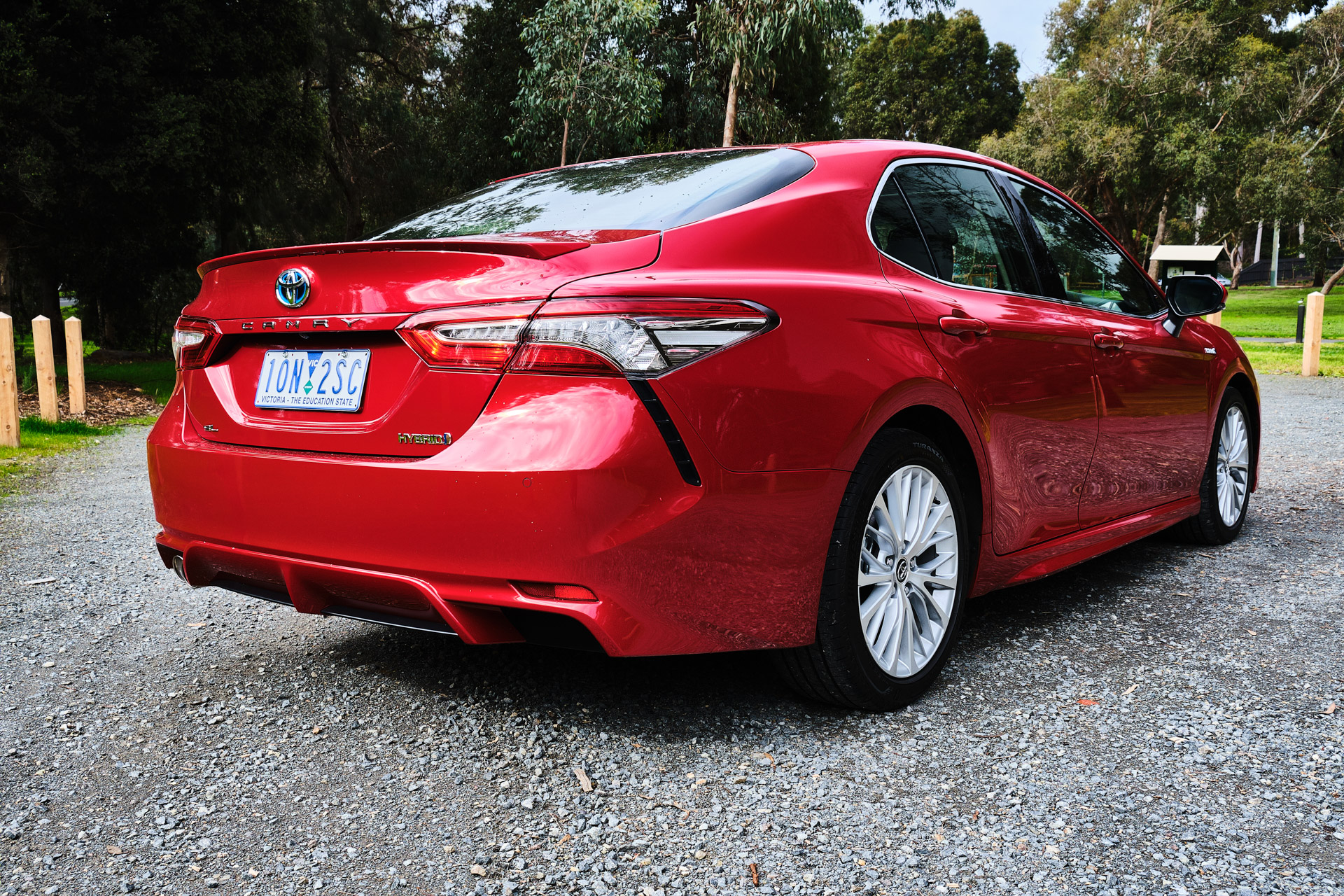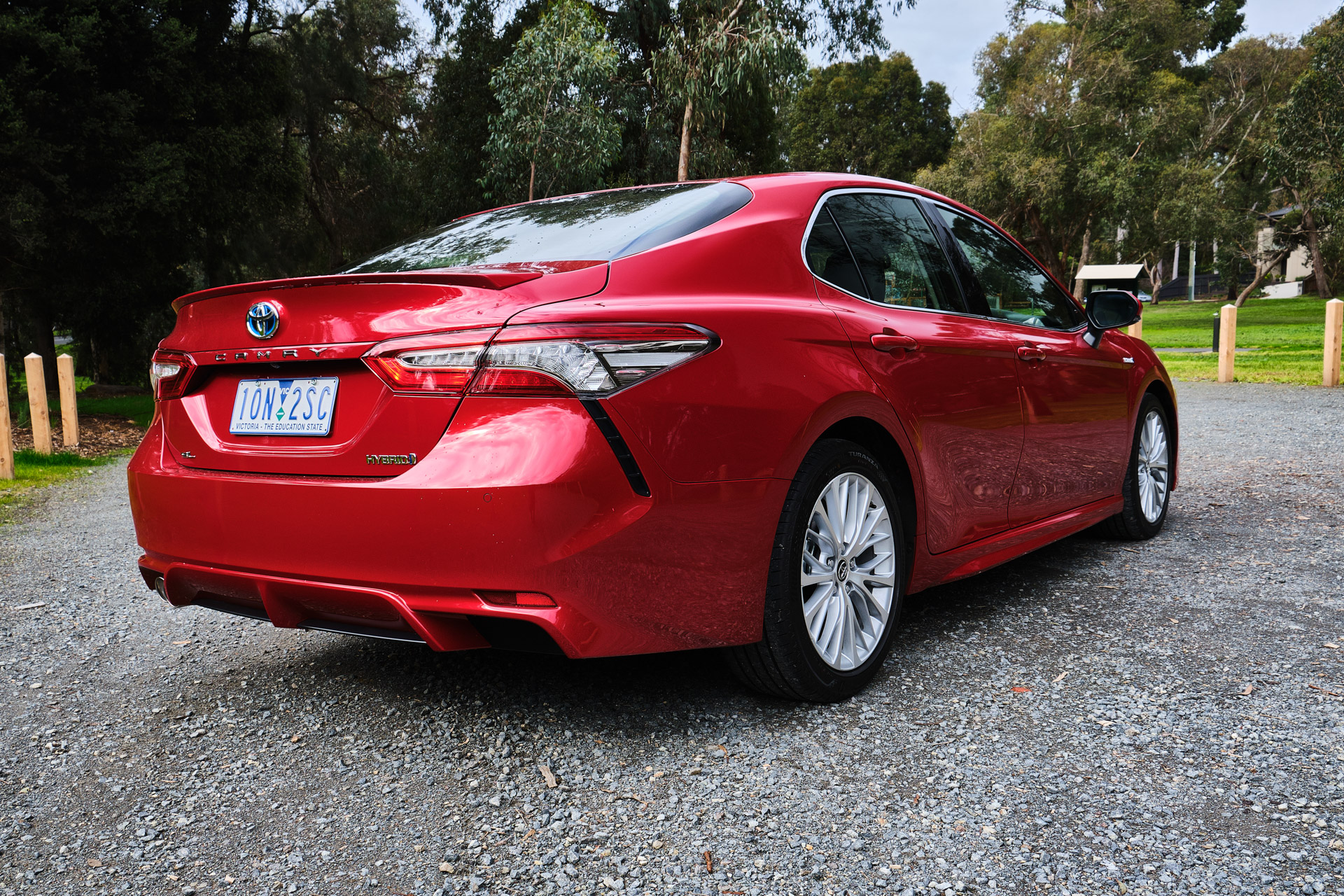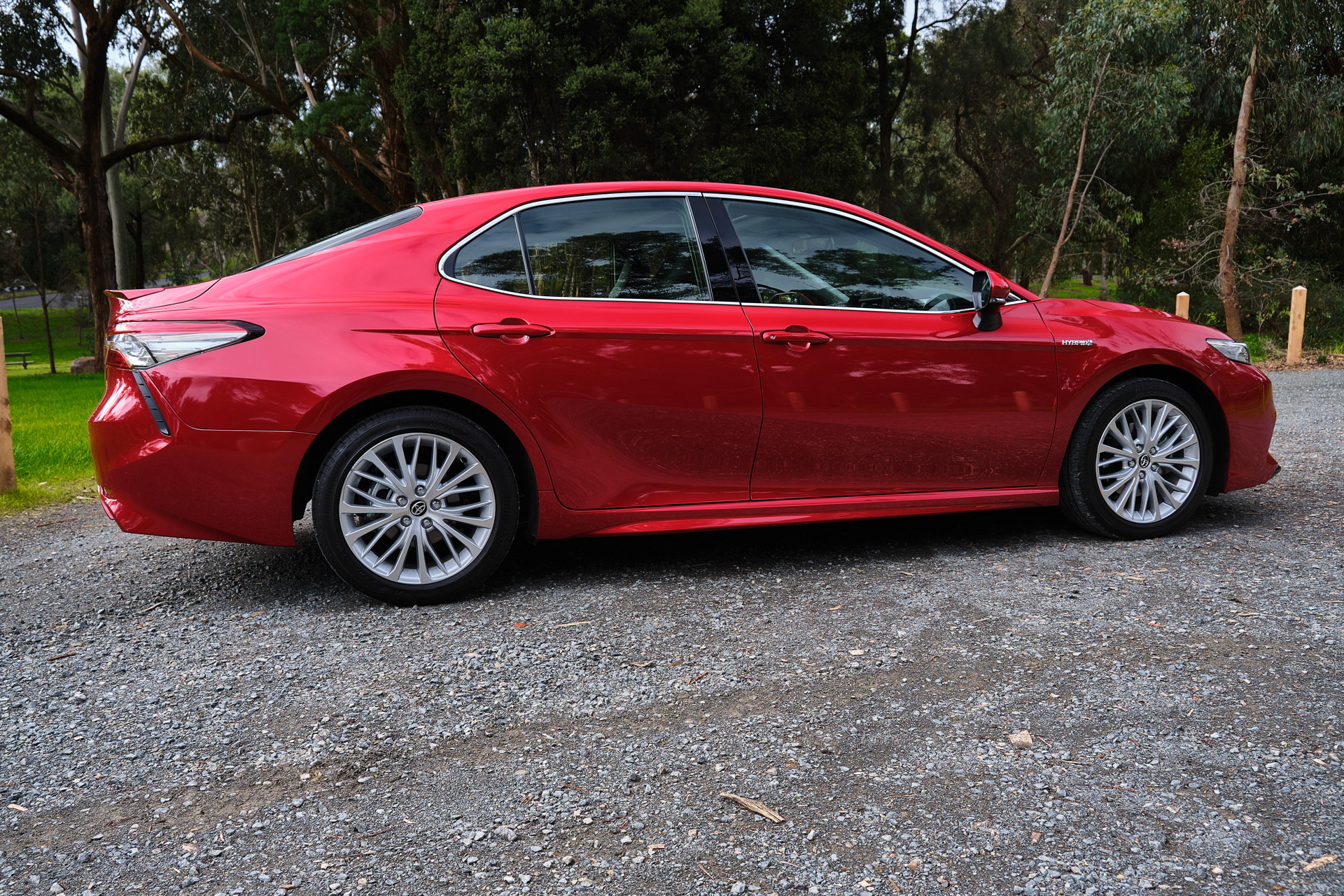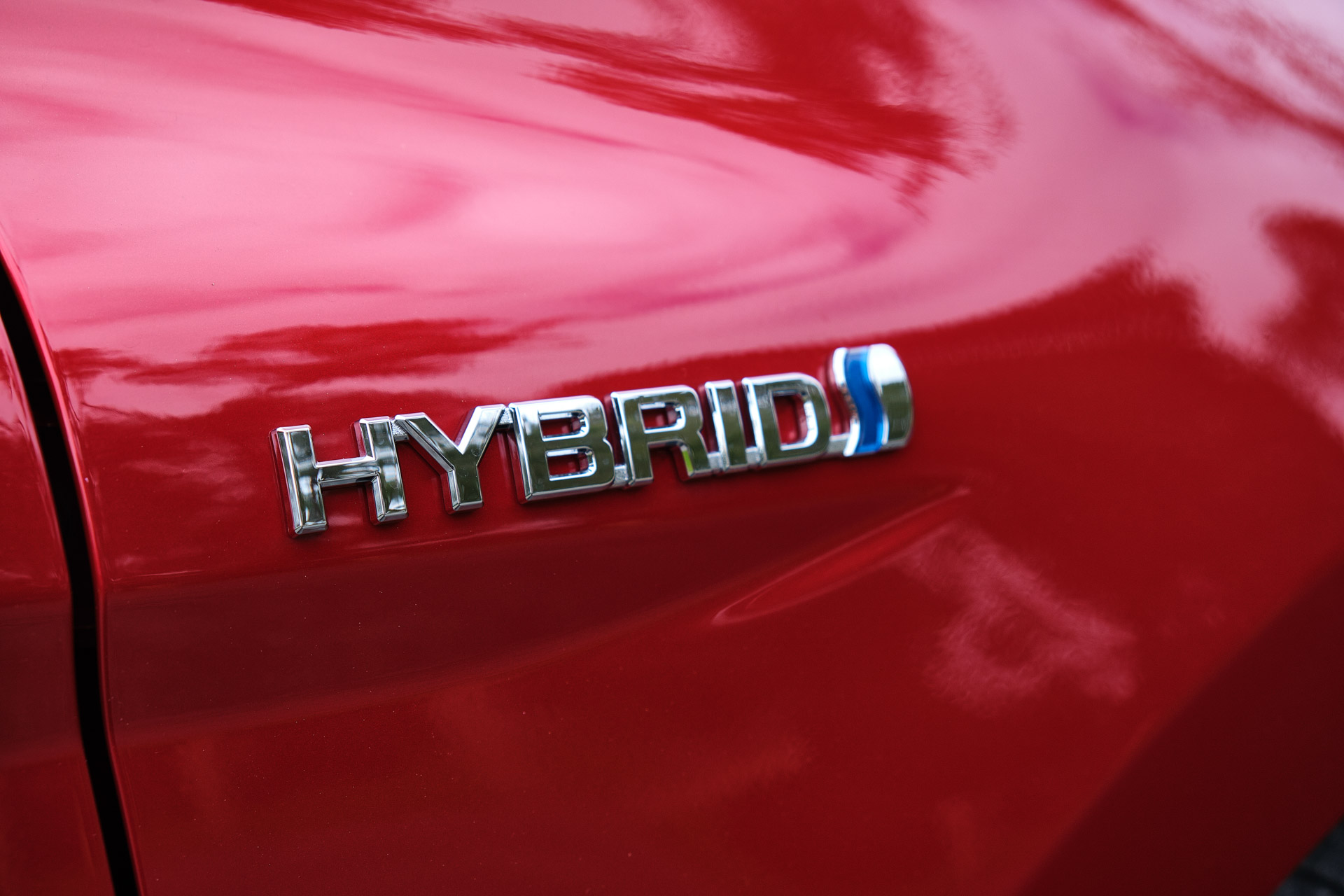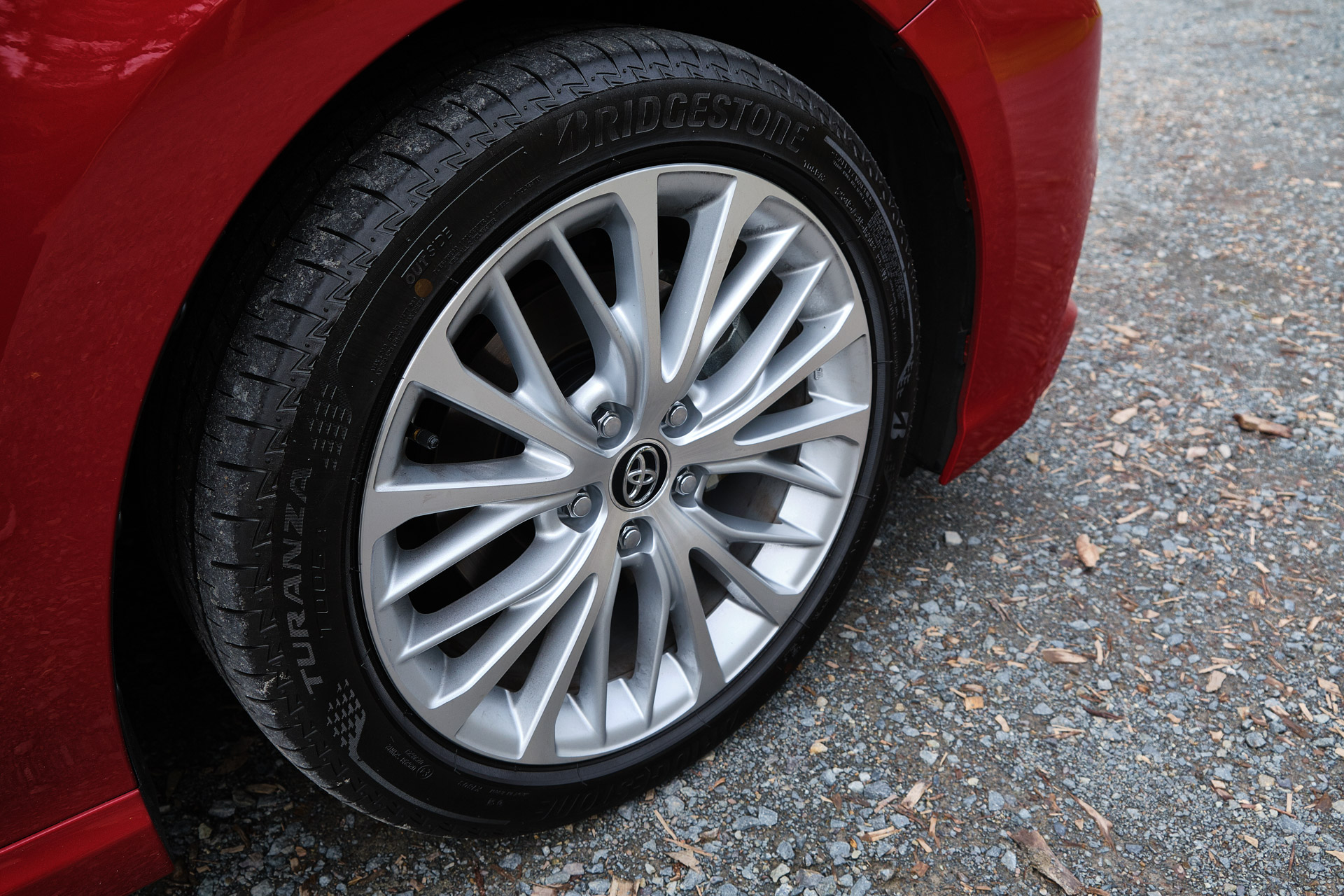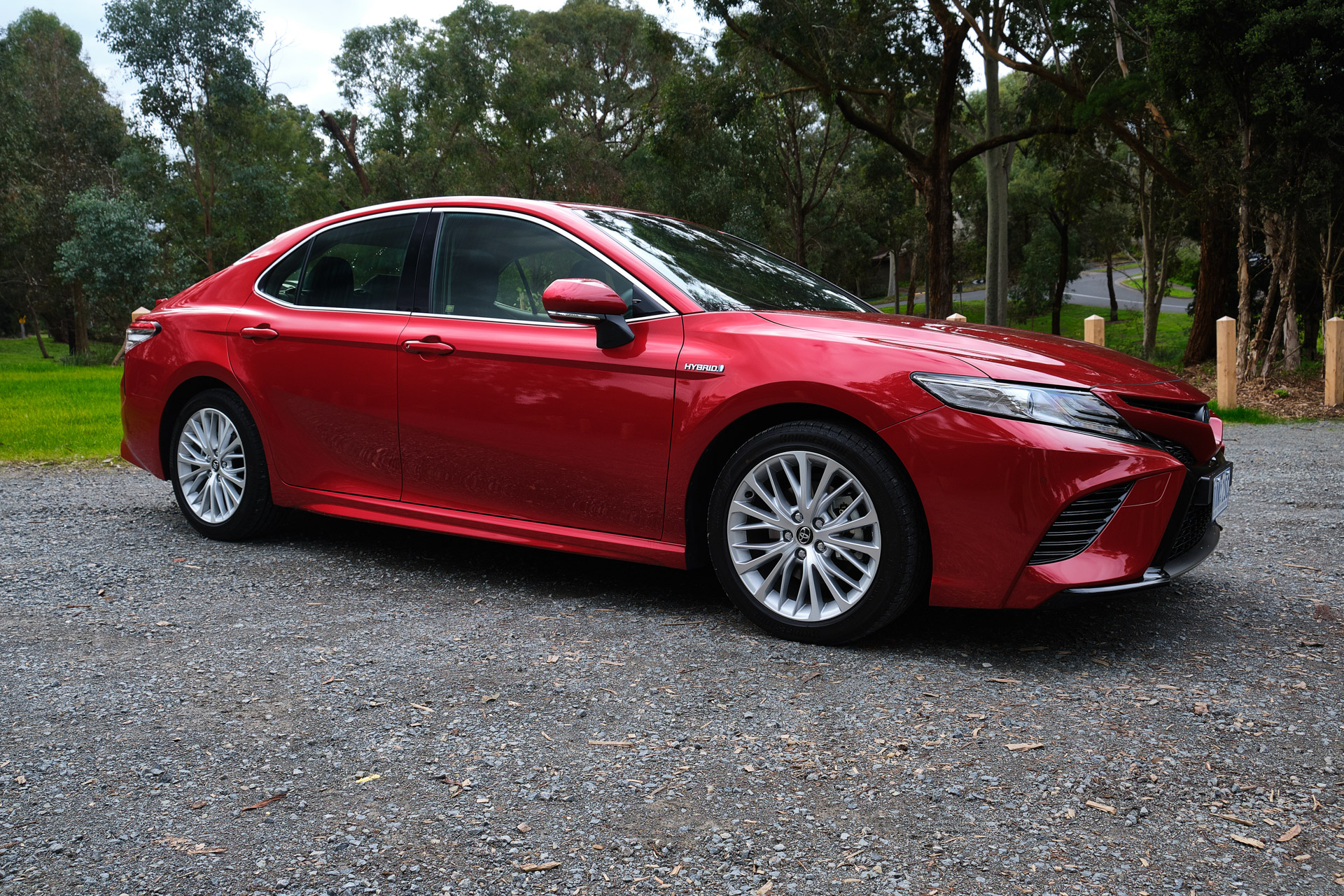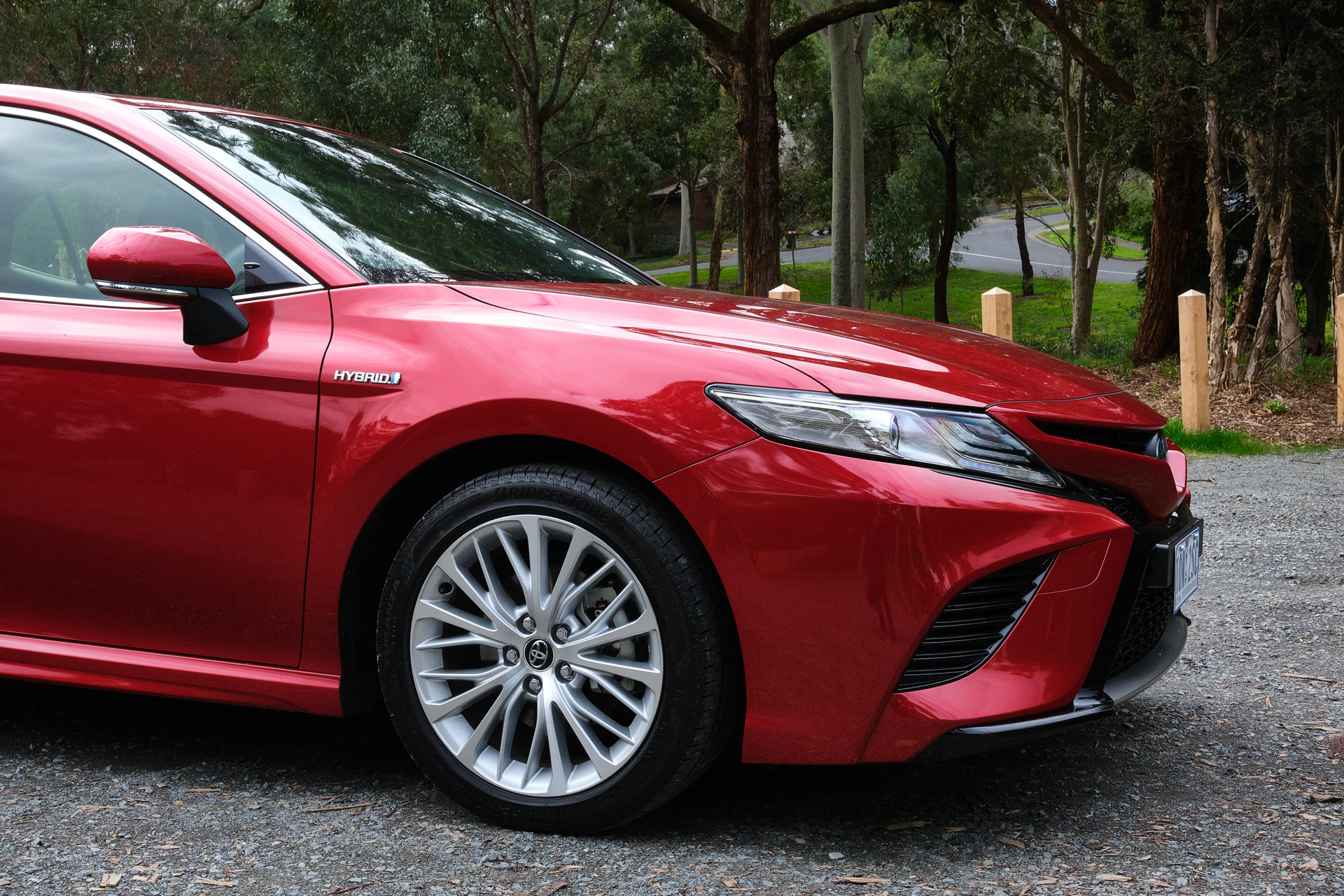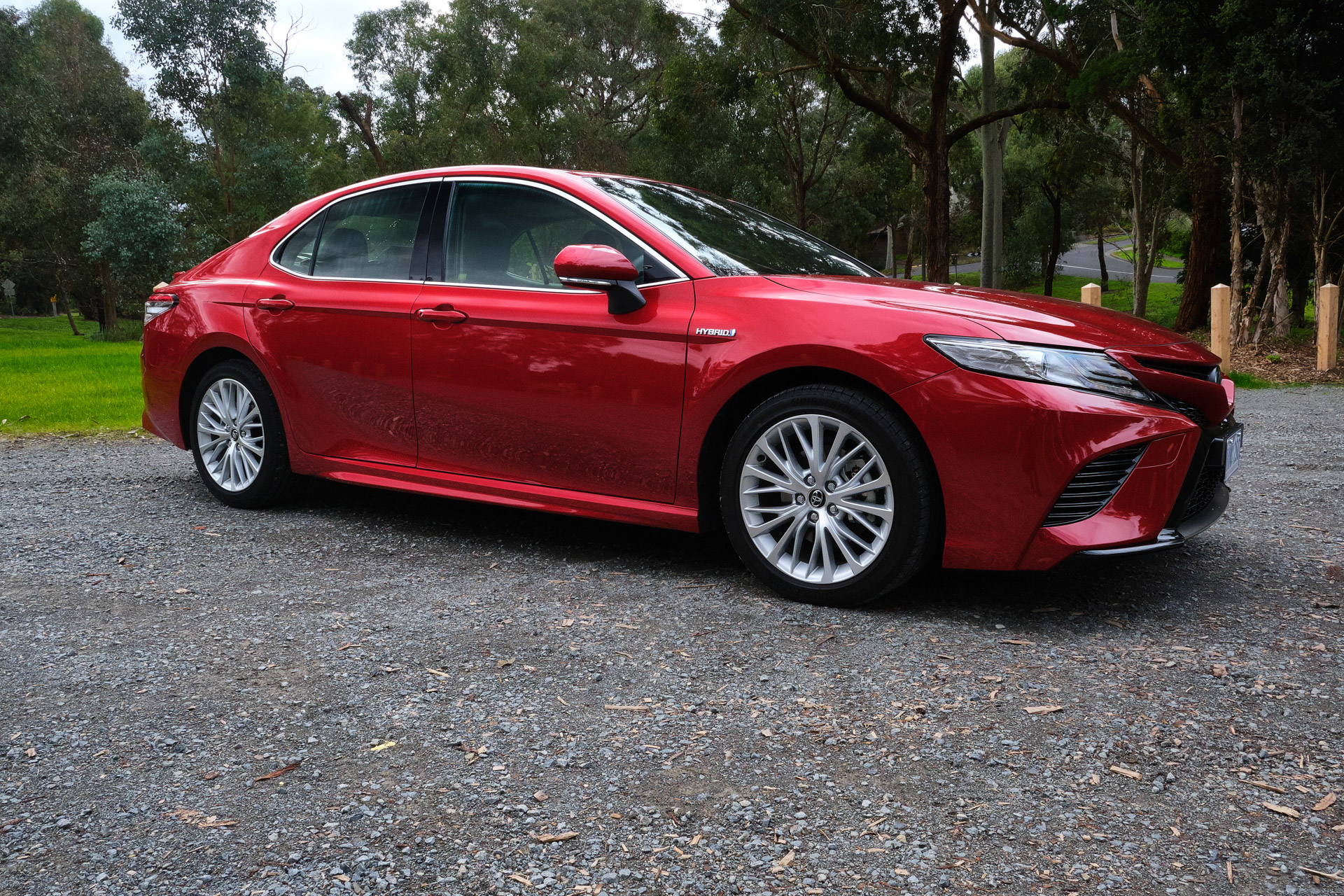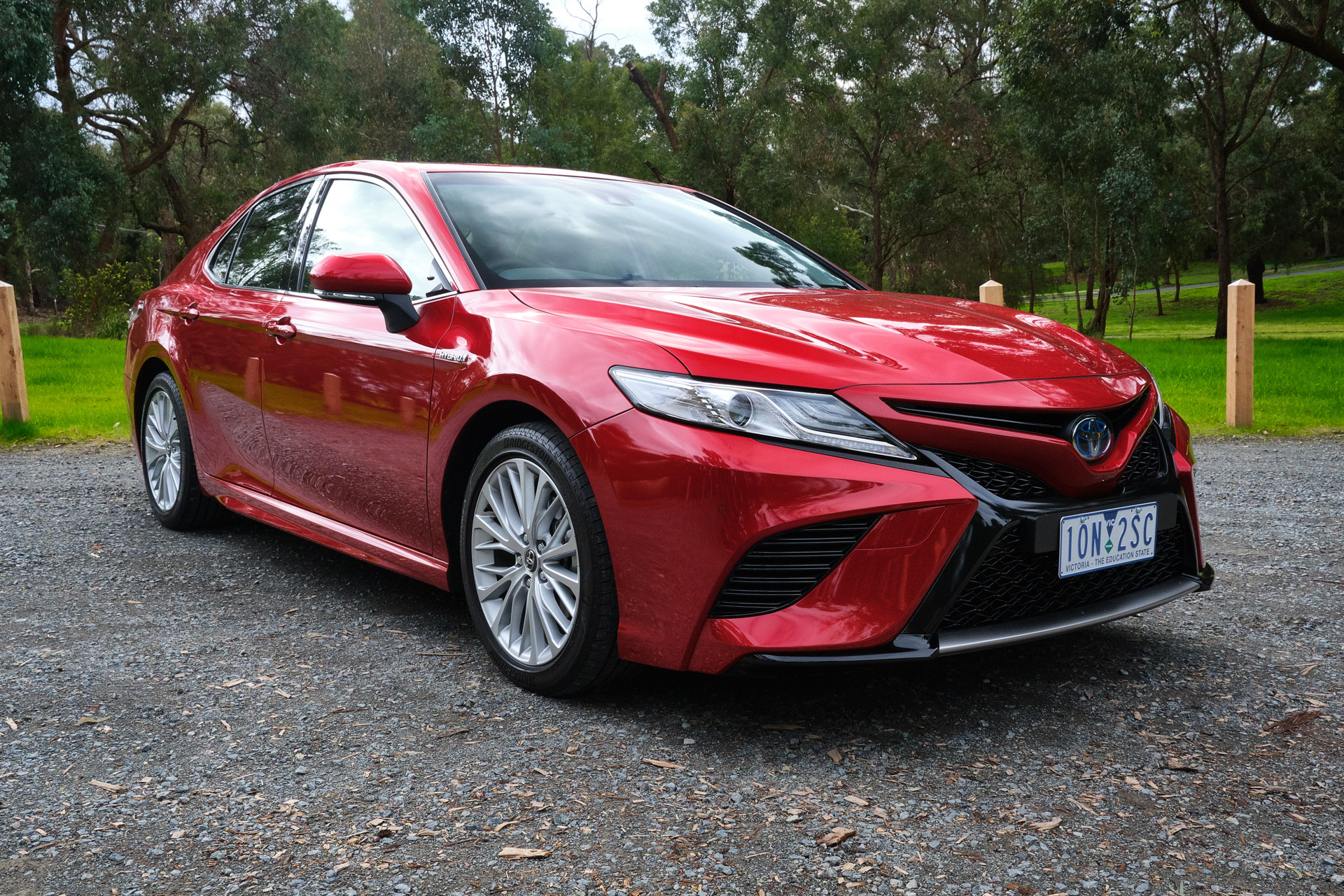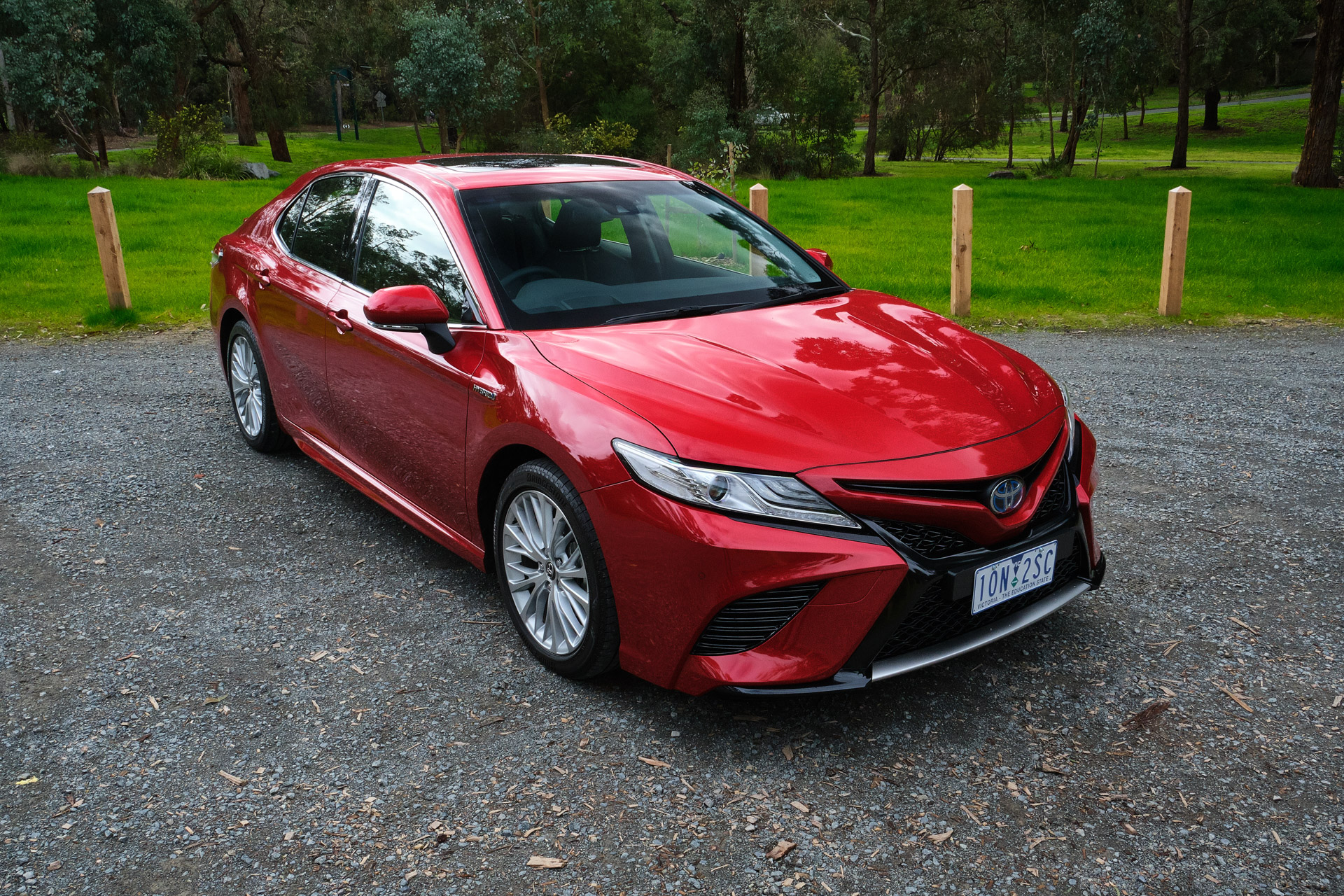For years, no decades, the Toyota Camry was one of the most boring, conservative and blandest vehicles on the market. It has long been extremely dependable and well-suited to a huge array of new car buyers but certainly wasn’t the car one would buy if they wanted to make a statement and be seen. The eighth-generation is a little different.
The Japanese car manufacturer shocked many when it unveiled the current Camry at the start of 2017 and, thanks to the radical redesign, it’s morphed into a car that is both pleasing to the eye and to drive, as we recently discovered.
Toyota sells the new Camry in all manner of different forms depending on the market. In Australia, buyers have the choice of Ascent, Ascent Sport, SX, and SL models with a host of different petrol and hybrid engines. The model we recently tested was the SL Hybrid, and it is perhaps the pick of the range.
There’s a reason Toyota is the master of hybrid powertrains
All current Camry models are based on the Toyota New Global Architecture (TNGA) also used by the CH-R and Prius. The SL Hybrid is powered by a naturally-aspirated 2.5-liter petrol four-cylinder which delivers 175 HP and 221 Nm (168 lb-ft) of torque and an 118 HP electric motor with 202 Nm (148 lb-ft) of torque.
Toyota are the masters of the hybrid powertrain – and it shows. The car operates in all-electric mode at speeds of up to about 45 km/h (27 mph) if you’re gentle on the throttle or place it in EV Mode. When you press the throttle a little harder, the petrol engine kicks in, but unlike so many other hybrids on the market, does so with remarkably little fuss. In fact, the engine is so quiet that at times it’s difficult to know if it’s actually on, the only giveaway being whether or not the little green ‘EV’ light on the instrument cluster.
Mated to this powertrain is Toyota’s CVT gearbox. It complements the engine to a tee. Unlike others, it doesn’t try to mimic the sound and feel of a traditional automatic ‘box, resulting in a silky smooth package. The presence of paddle shifters is a little strange, however, because the CVT doesn’t alter the powertrain’s revs as you flick through the virtual “gears”.
Toyota claims that the Camry Hybrid’s powertrain returns a remarkable 4.5 lt/100 km (52.26 U.S. mpg) on the combined cycle. Various driving on motorways and through the suburbs of Melbourne resulted in a consumption figure of 5.4 lt/100 km, which is seriously impressive for a vehicle of this size.
A Camry that’s fun to drive? Surely not…
The switch to the TNGA architecture means the new Camry benefits from a double-wishbone suspension at the rear and MacPherson struts up front. These work together to create a sedan that offers both impressive comfort and road handling. Few, if any, Camry owners will ever try to explore the limits of grip, but if they do, they will be pleasantly surprised with how well their car handles.
Tipped aggressively into a corner, the nicely-weighted, albeit vague, steering provides positive feedback to the driver and the car always feels composed and planted. Adding to the pleasant experience is a superb driving position and the presence of a low scuttle that allows drivers to see the top of both front wheel arches. The near-infinite level of adjustment of the seat and electronically-adjustable steering wheel make finding the ideal driving position easy.
Also Read: 2020 Toyota Camry TRD Seems Like A Bargain At $31,995
Driving on open-stretch of roads is a breeze thanks to Toyota’s excellent radar cruise control. There is also a lane assist function, but it only warns you when you are leaving your lane and doesn’t take control of the steering like it does in many other Toyota and Lexus models.
An interior that reminds you sedans still have some life left in them
The Camry Hybrid is a joy to spend time in. The cabin feels spacious and is clad in luscious leather that’s soft to the touch. Located directly in front of the driver is an analog speedometer and, rather than a tachometer, a gauge that signals whether the engine’s battery is being charged, if the car is operating in its ‘Eco’ zone, and a section dedicated to ‘PWR’ (power). In between these is a digital screen that displays important information including the status of the various safety systems and current fuel economy numbers.
In SL trim, the Camry Hybrid comes with dual-zone climate control, head-up display, Bluetooth and USB functionality, satellite-navigation, and Qi wireless smartphone charging. I was a big fan of how the wireless charging was seamlessly incorporated into a dedicated section in front of the gear selector and was pleasantly surprised to find that the charging pad can slide away with a firm push to reveal a hidden storage cubby. It’s the little things that make a difference.
Can we get a modern infotainment system, please?
It is quite hard to critique the interior because it is so nice for a vehicle with a starting price of $40,990 AUD ($27,797 USD at current exchange rates), but there is one aspect in dire need of an update: the infotainment system. Toyota is introducing Apple CarPlay and Android Auto to its Australian models later this year, but as it is, the system relies on Toyota’s Link software and is sub-par. It is laggy and the screen itself isn’t great and while it is functional, it’s also the most out-dated part of the cabin.
On the plus side, space is good. Trunk capacity sits at 524 liters and four large adults can easily fit inside with little struggle. The inclusion of blind-spot monitoring, rear cross-traffic alert, autonomous emergency braking, collision alert, a reversing camera, and front and rear parking sensors are very welcome and come as standard across the Camry range, and our test car also came with a sunroof.
The complete package
Our test car was painted Feverish Red and I happened to think it looked excellent from the outside. Not only is it stylish, it also looks premium and wouldn’t look out of place with a Lexus badge.
And it’s not just the looks. That’s not the case with the Camry Hybrid, which is ideal for families resistant to the ongoing proliferation of SUVs and crossovers. Not only is this the best Camry ever to drive and live with, it is also desirable and has a striking design. What’s not to like?



